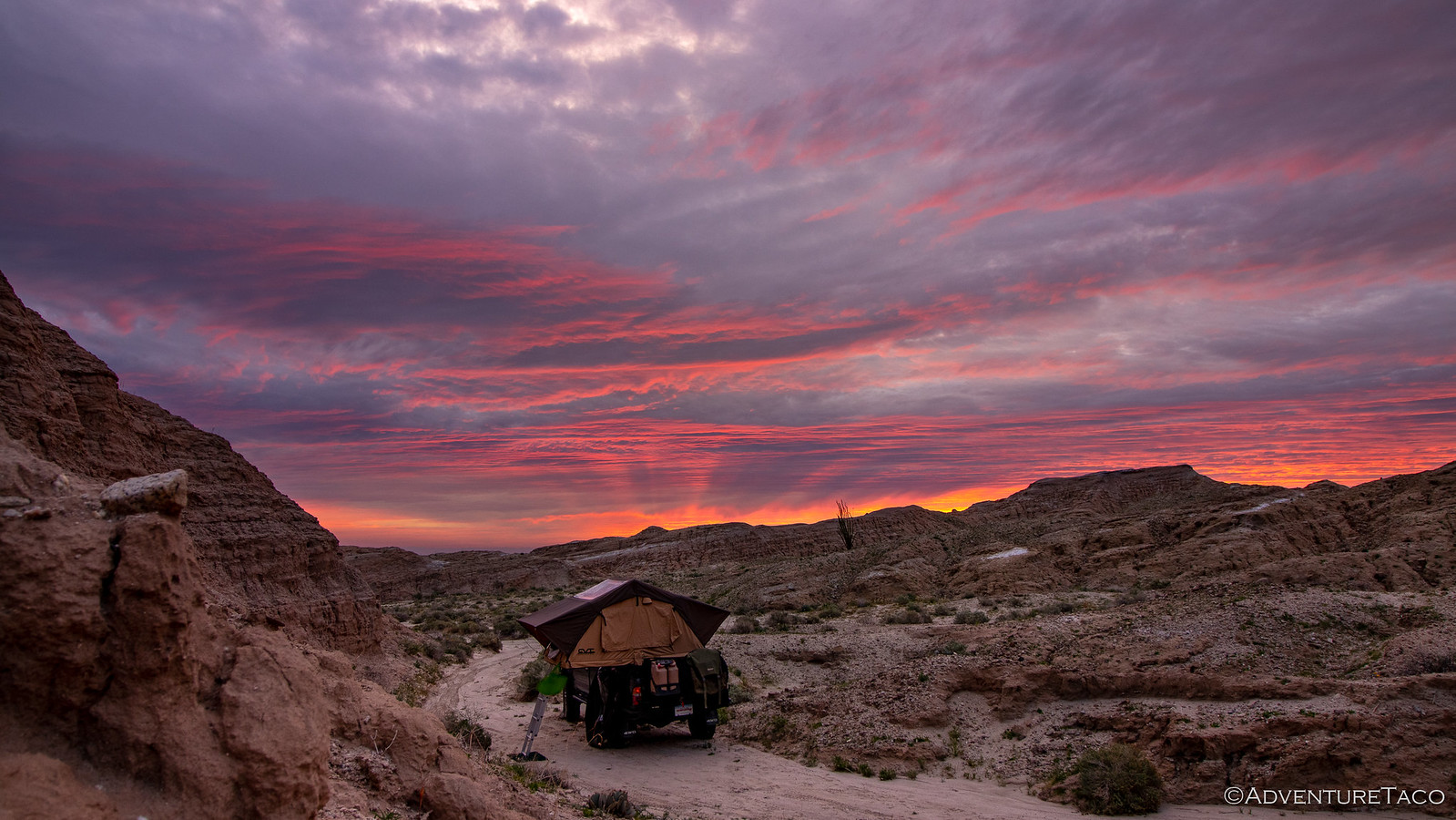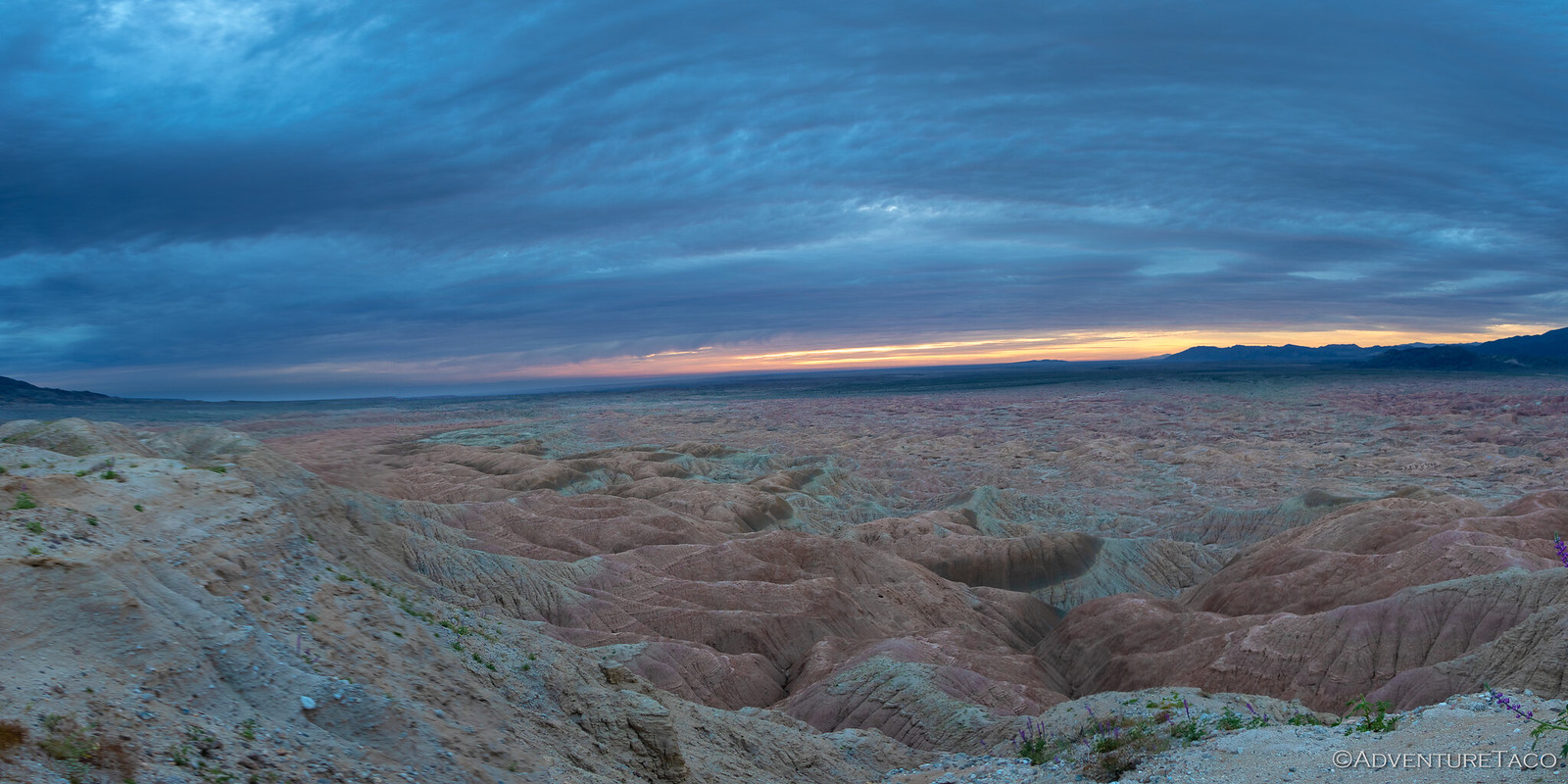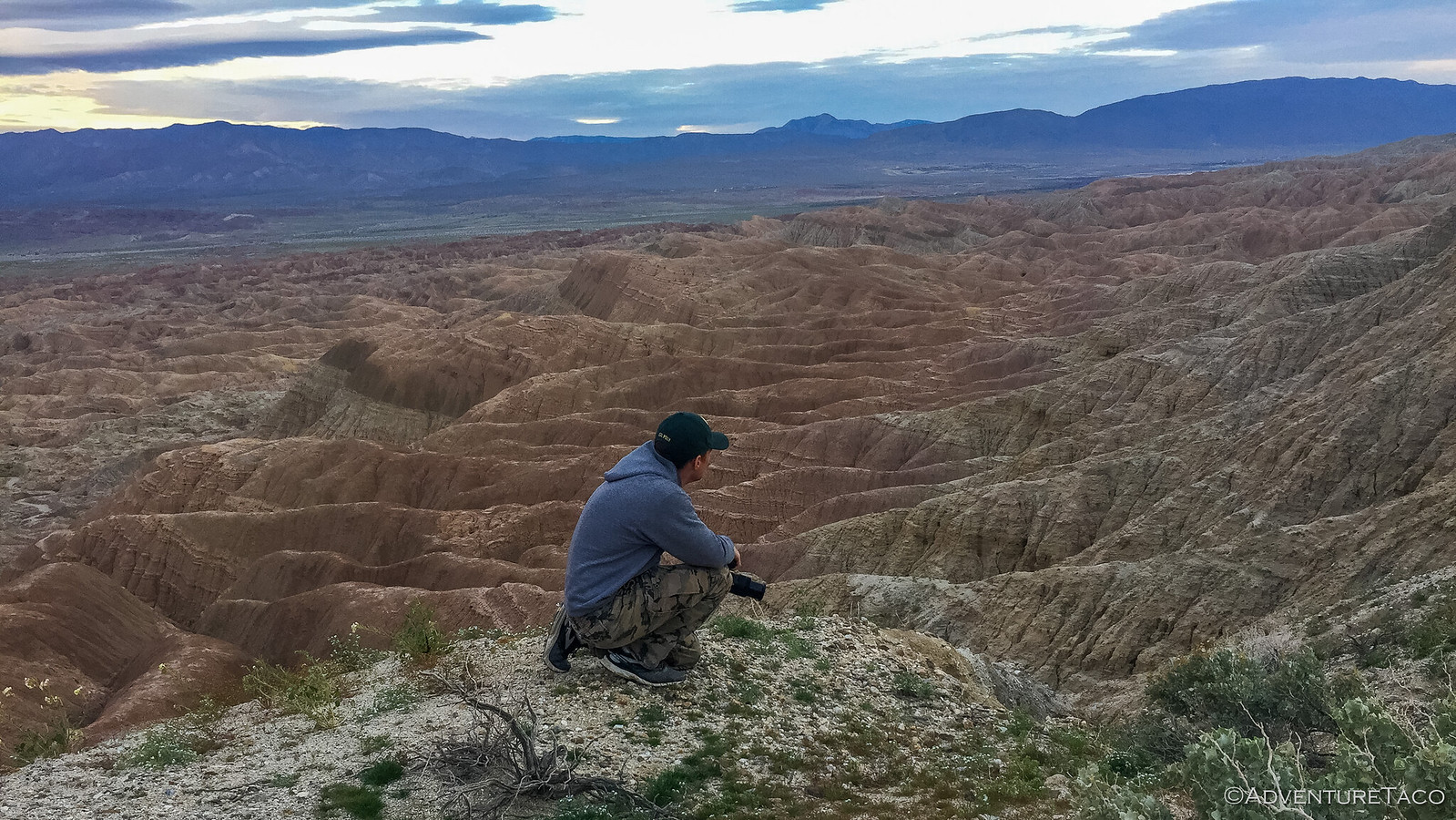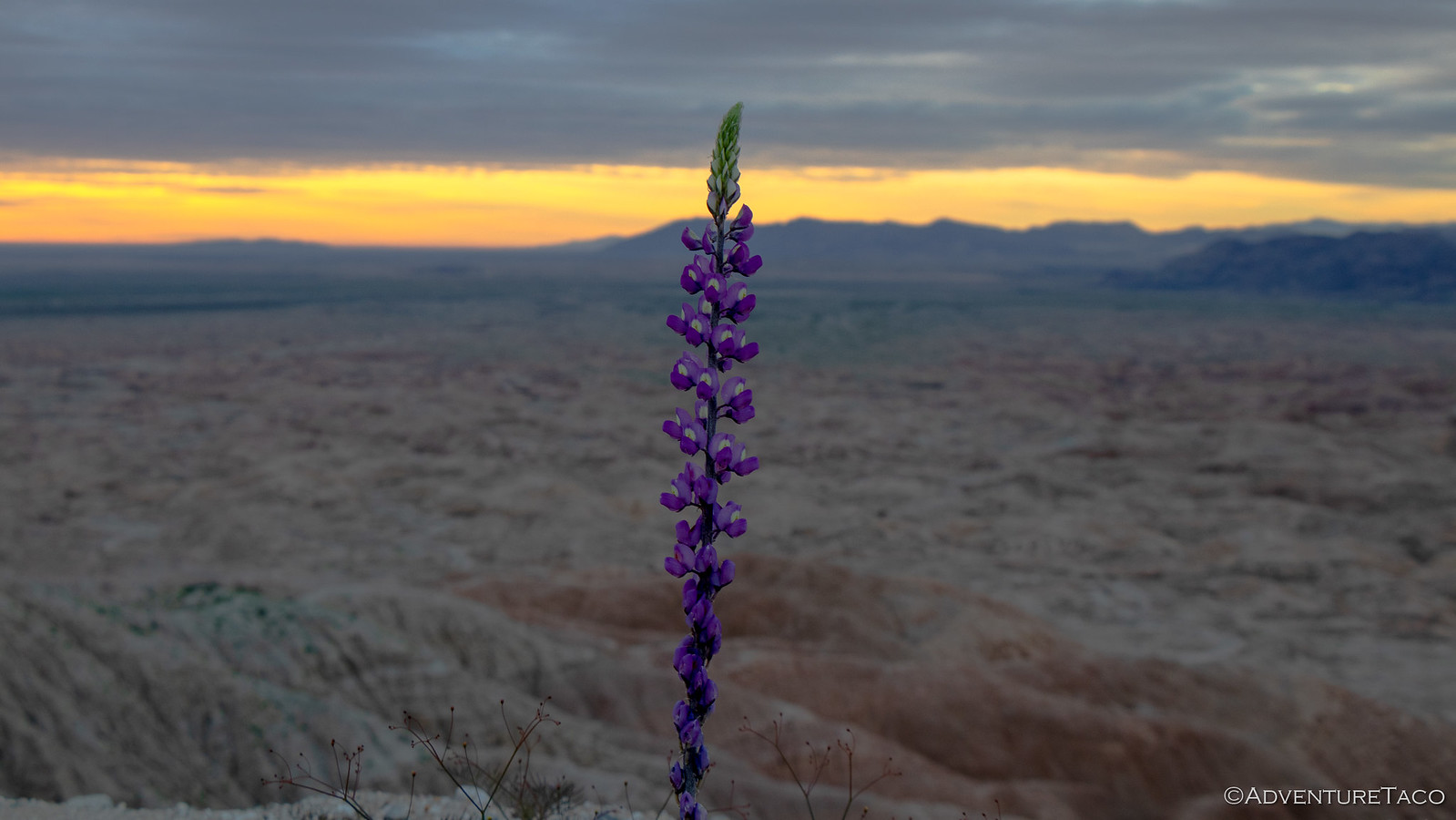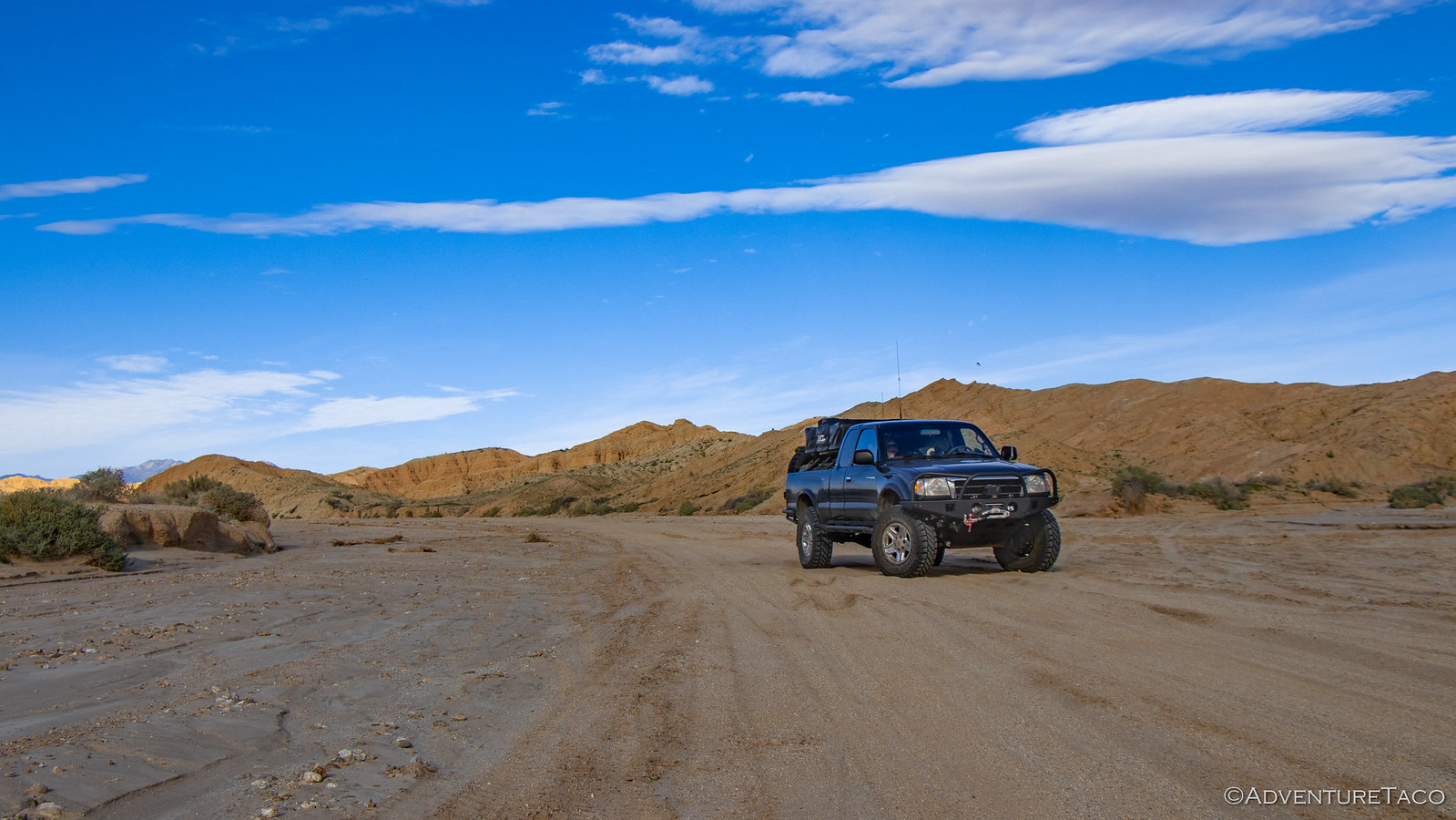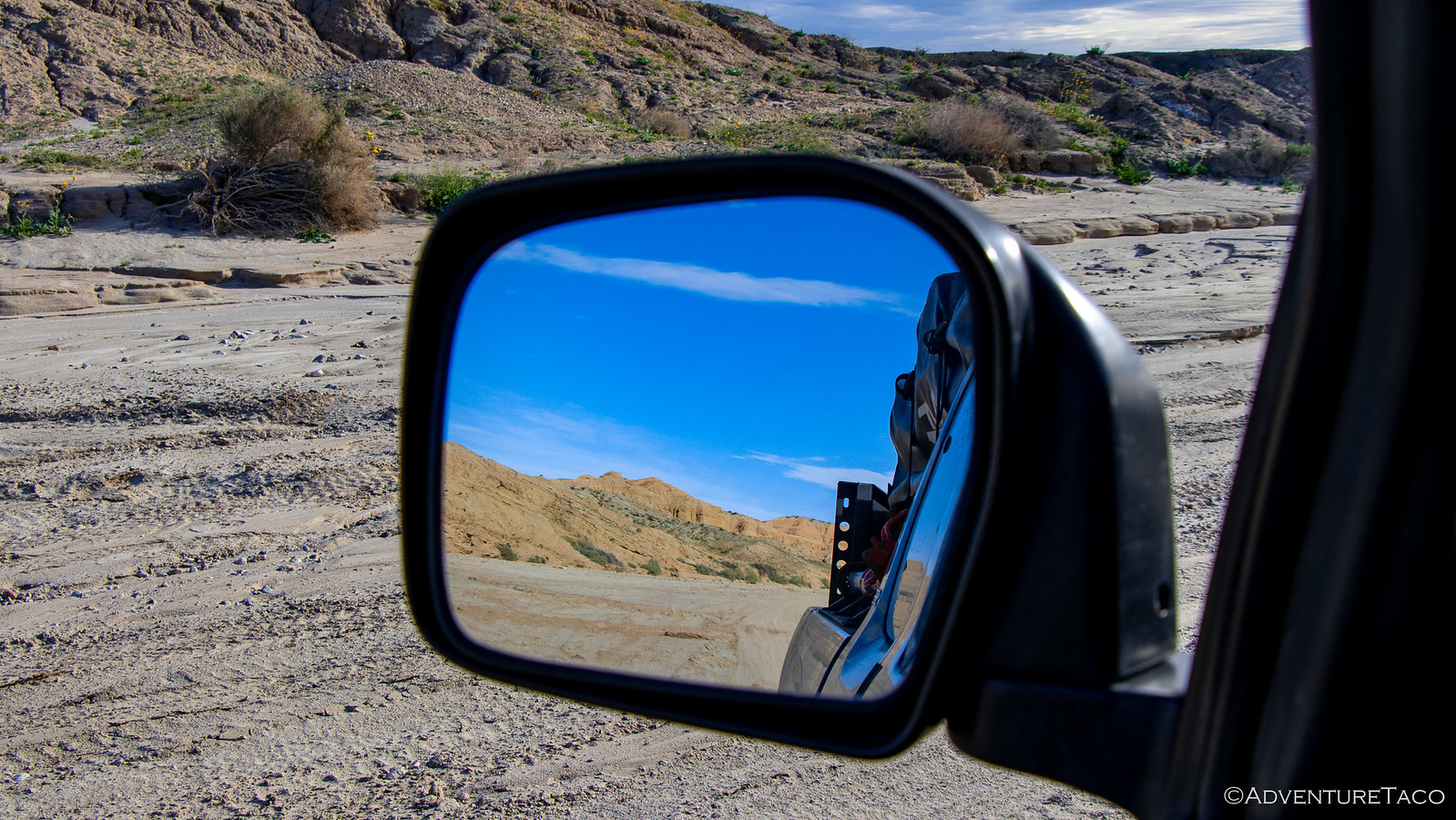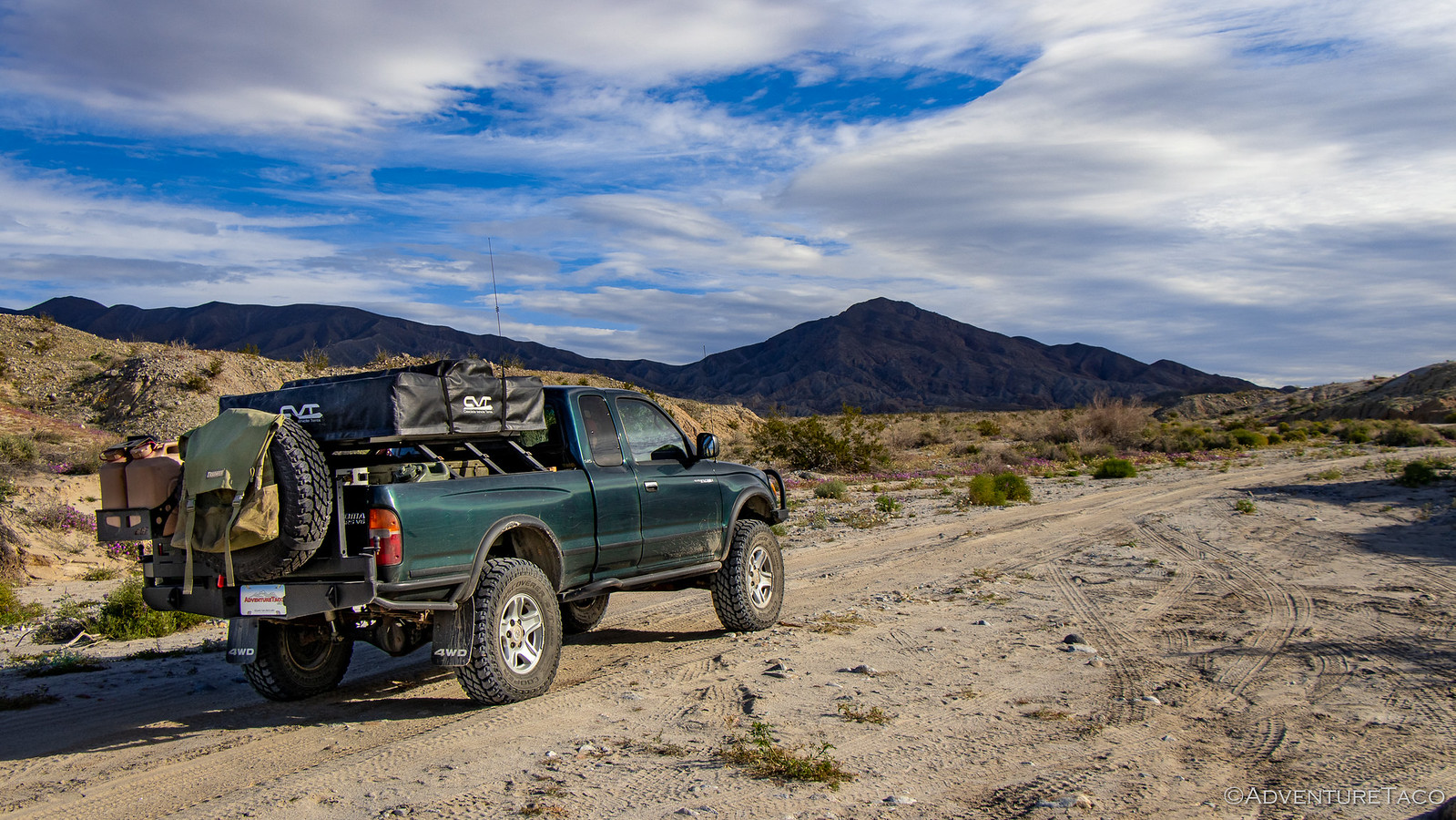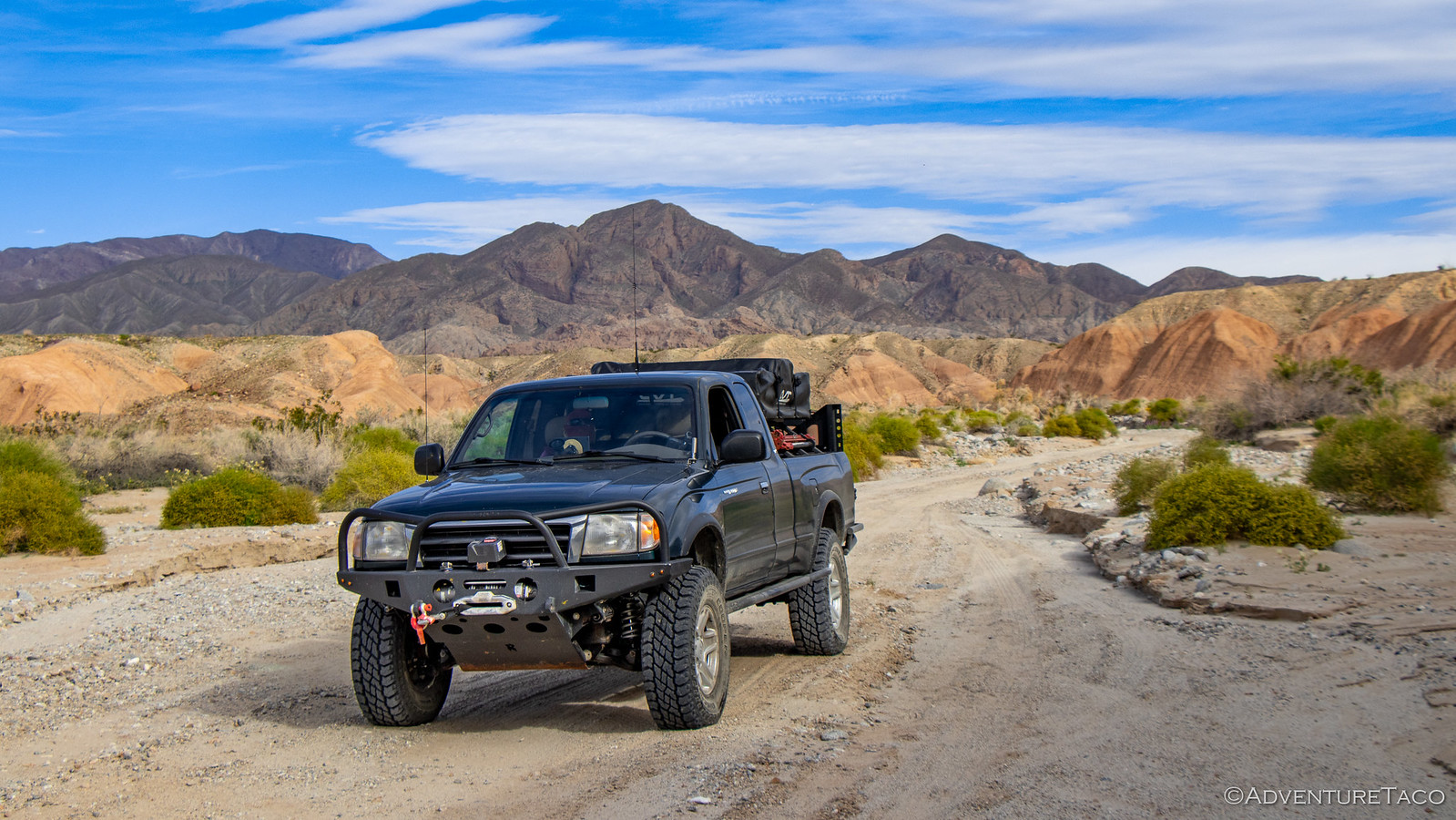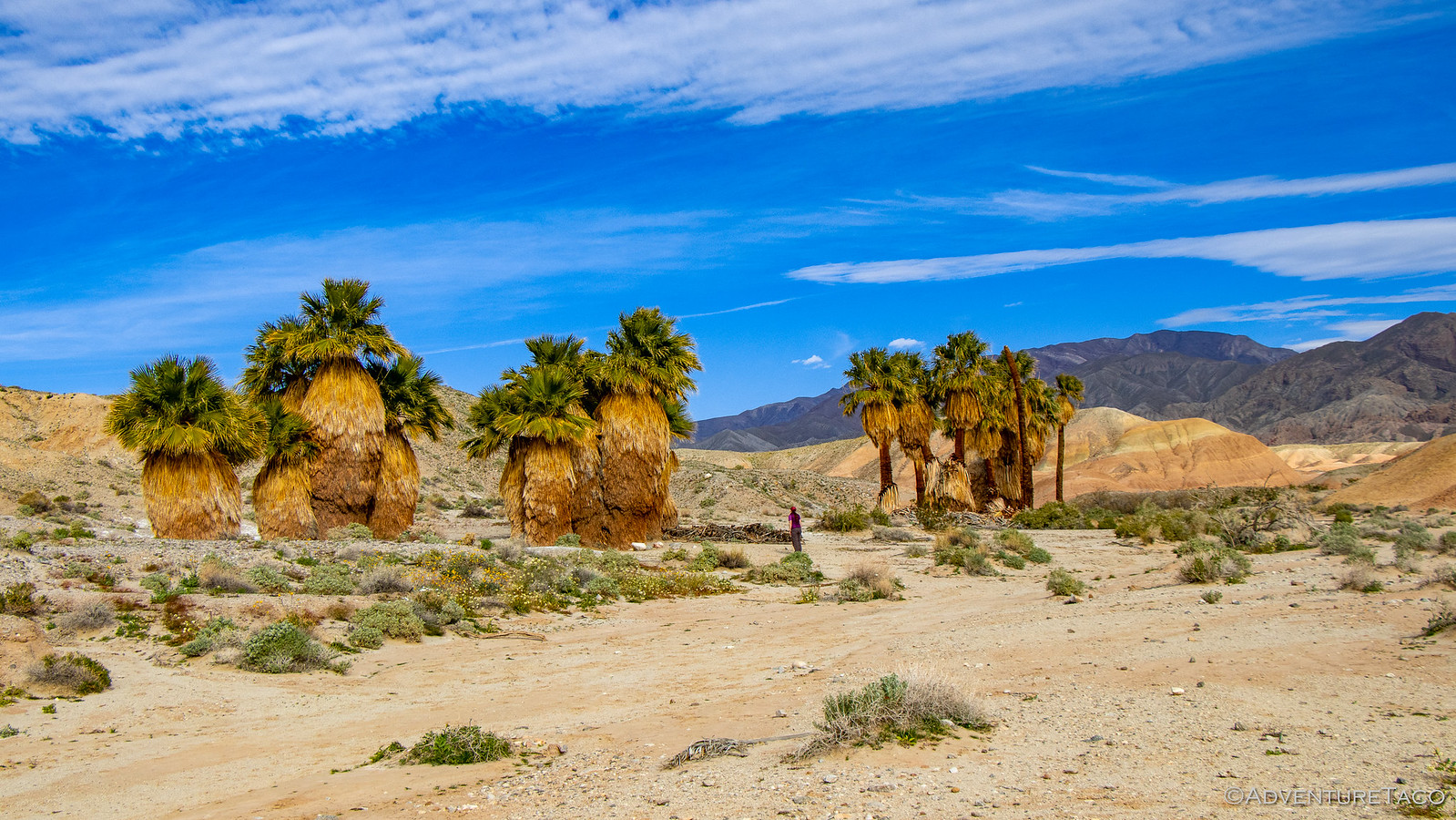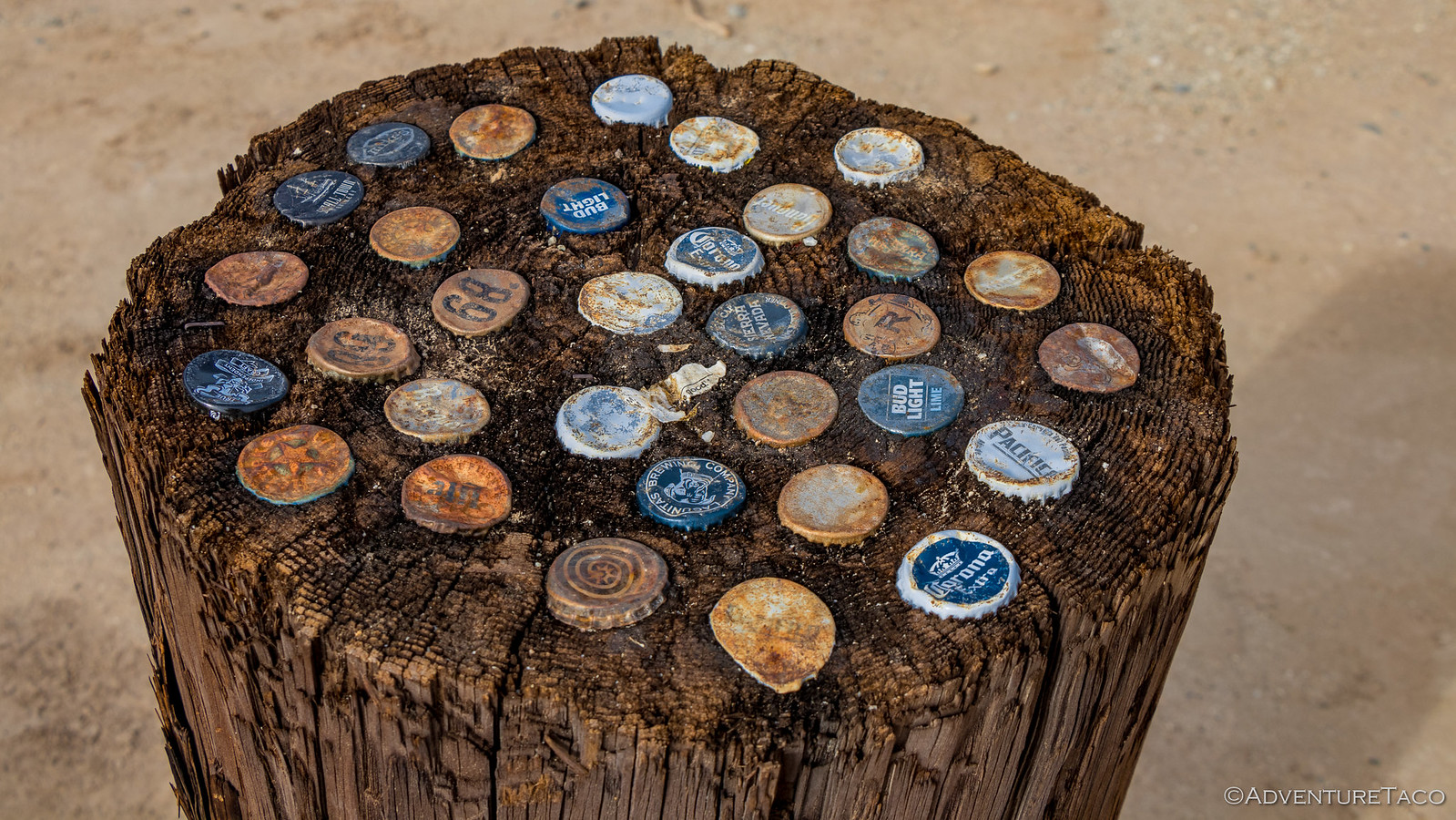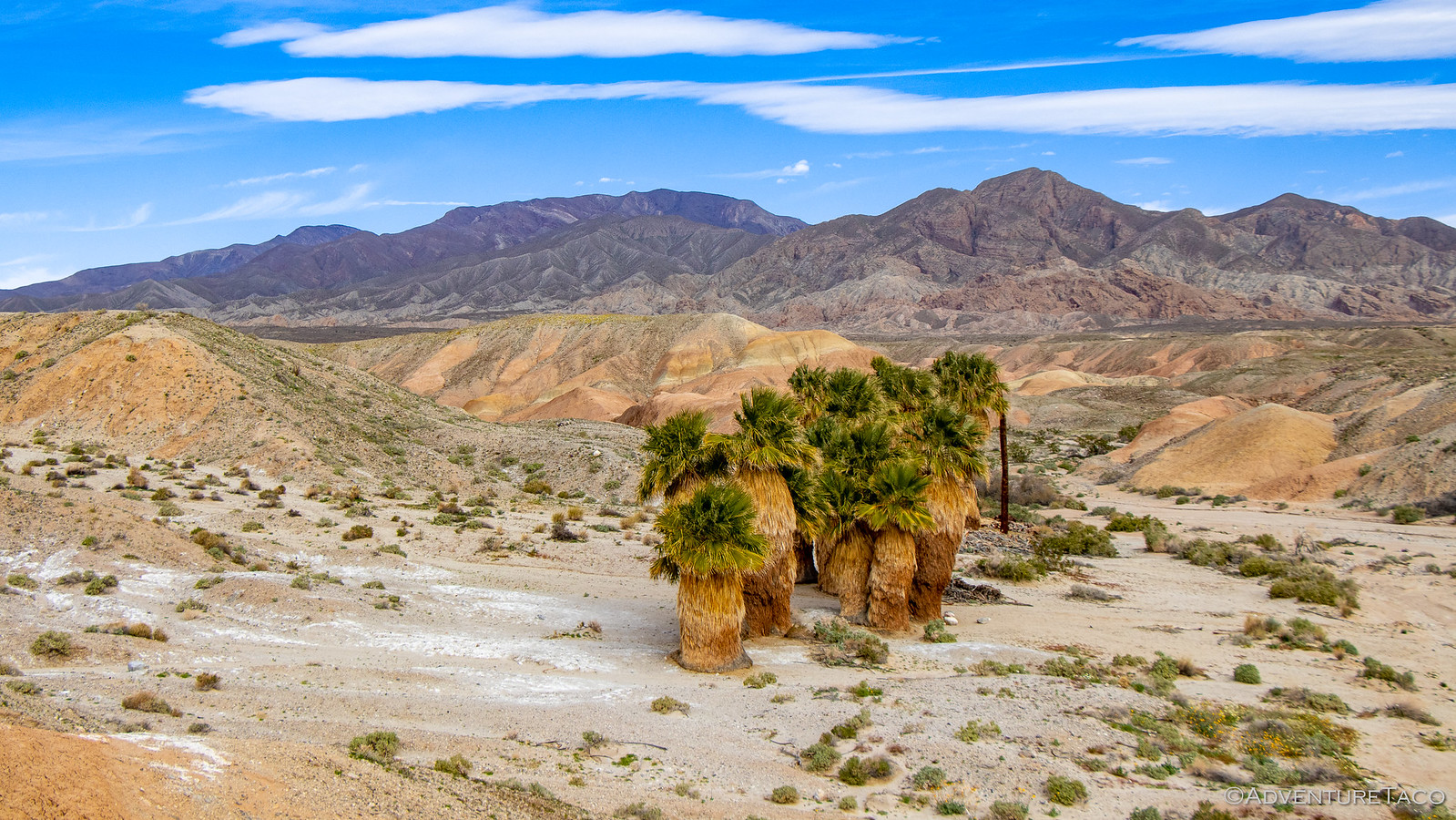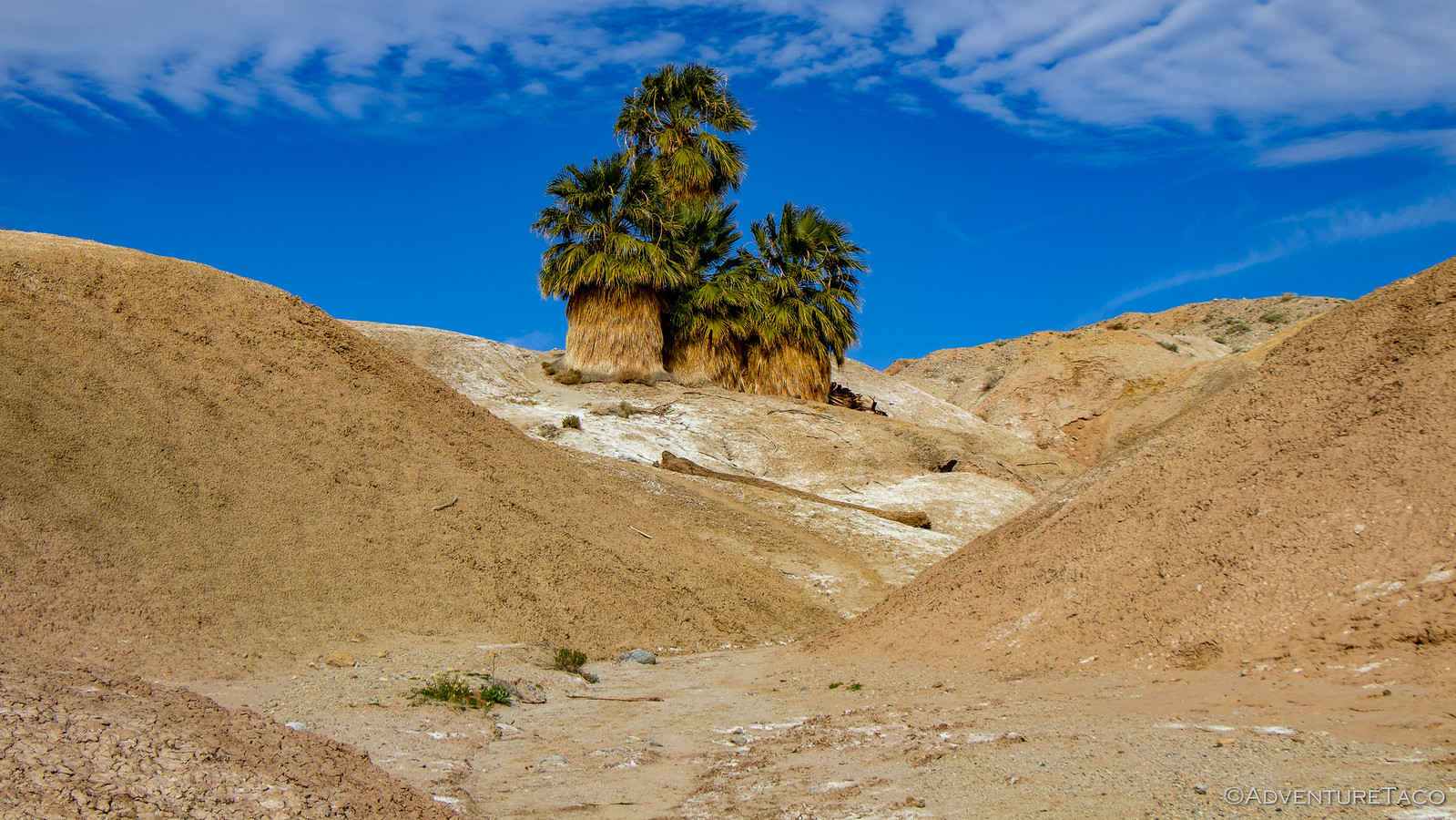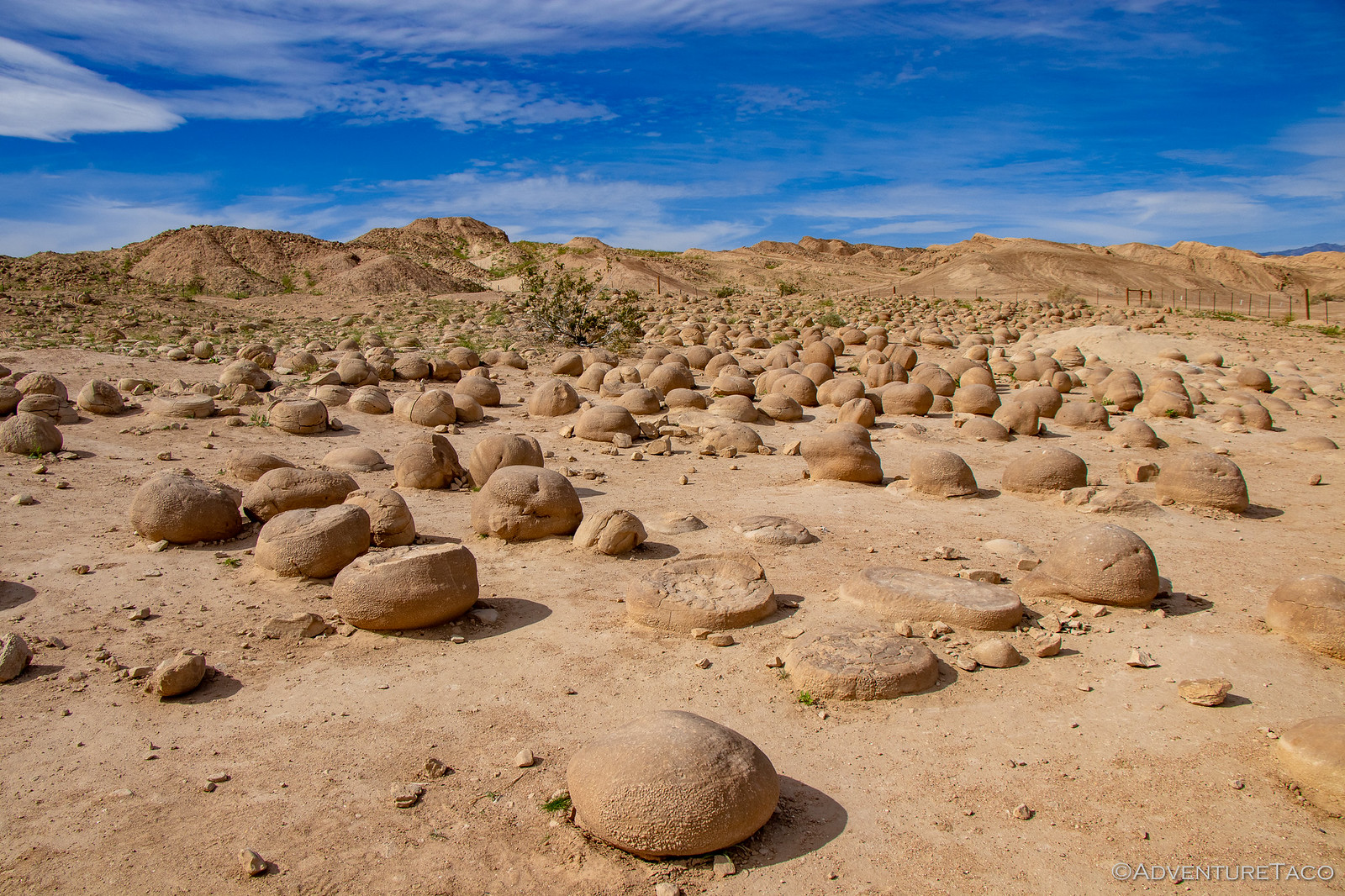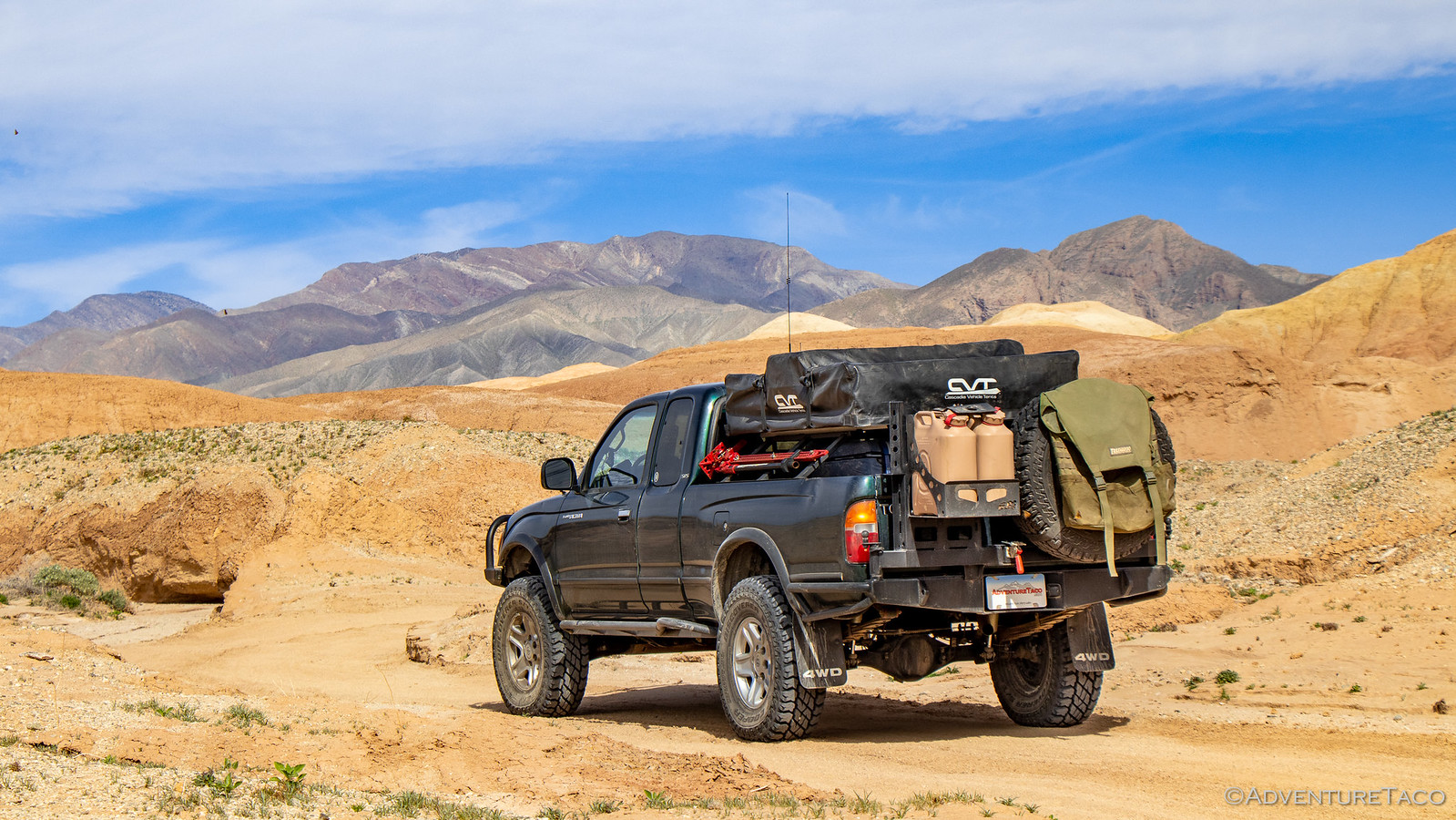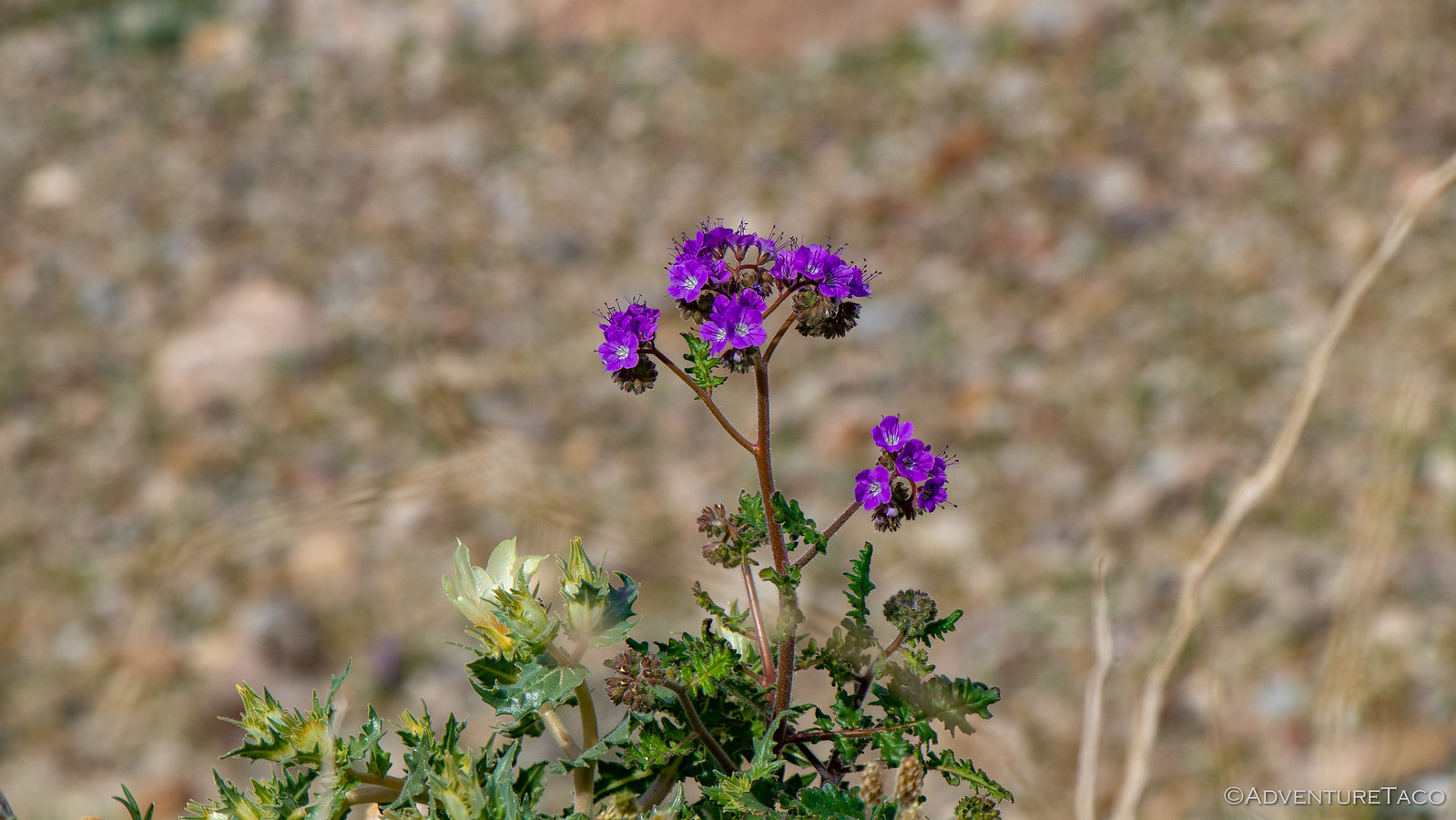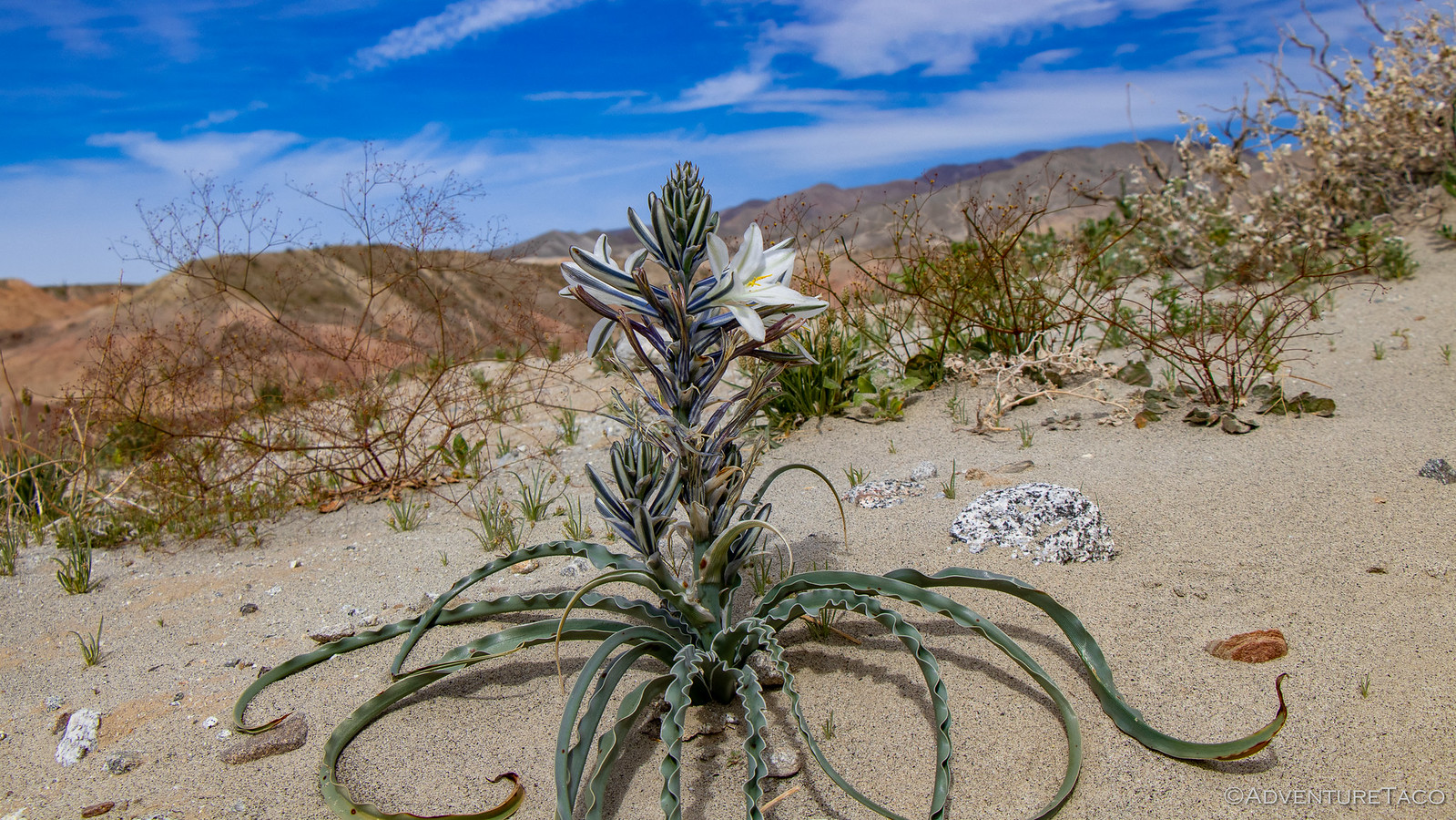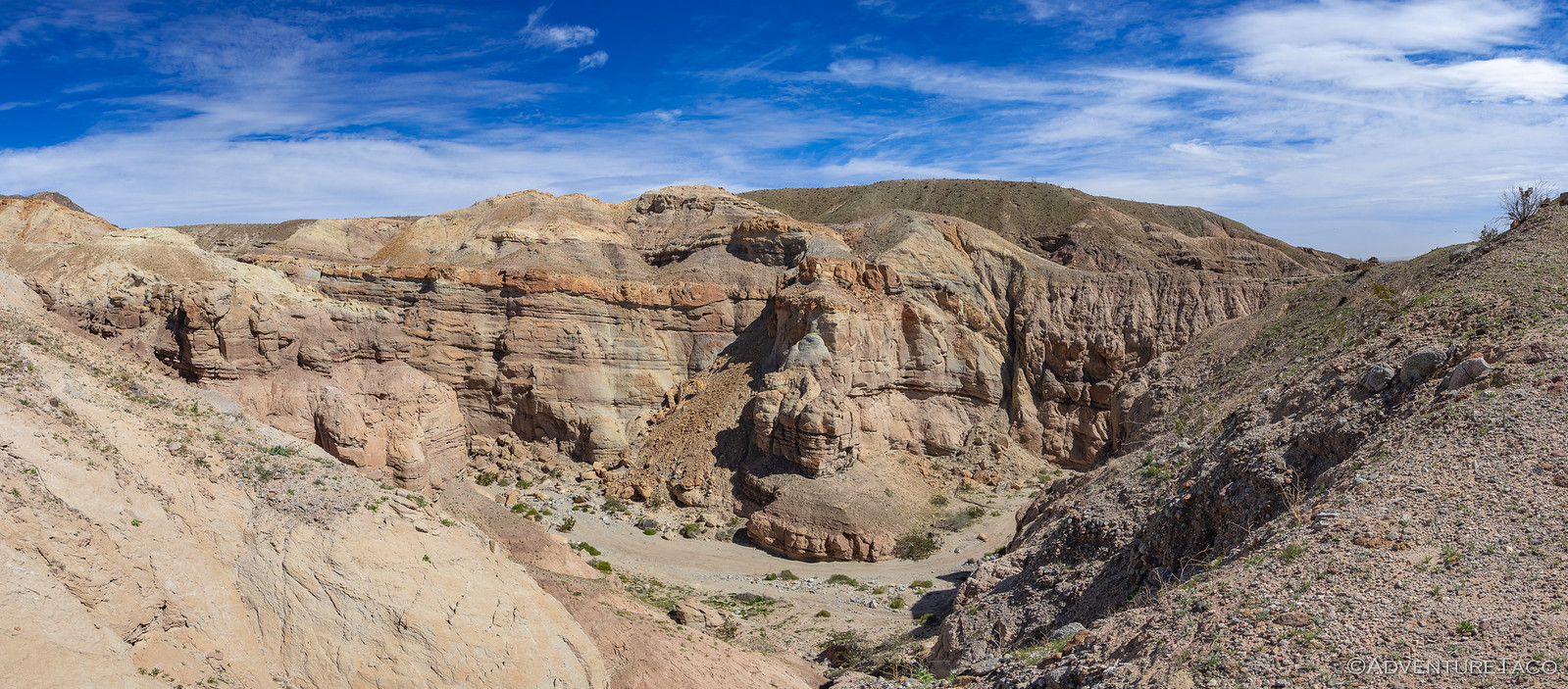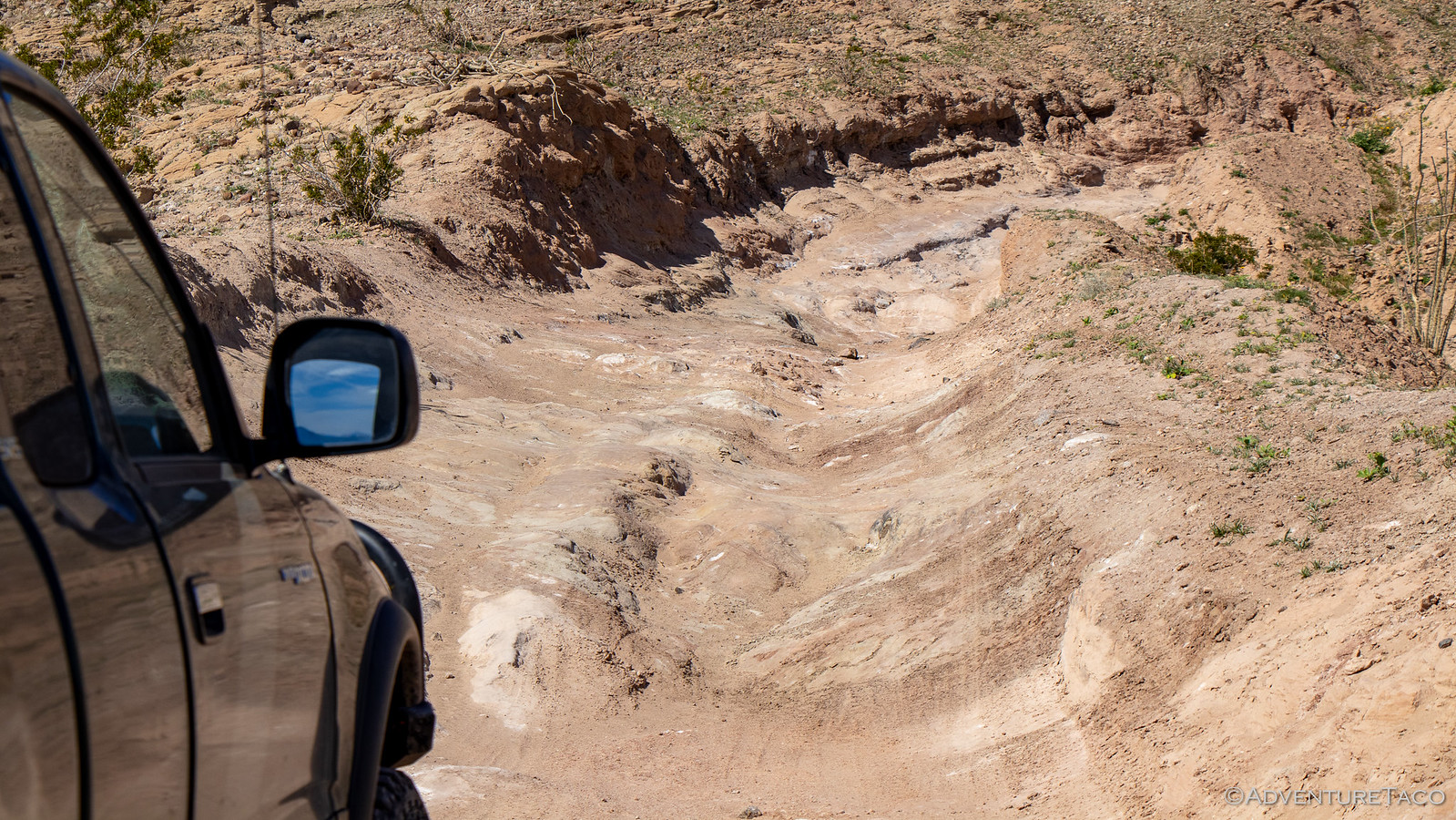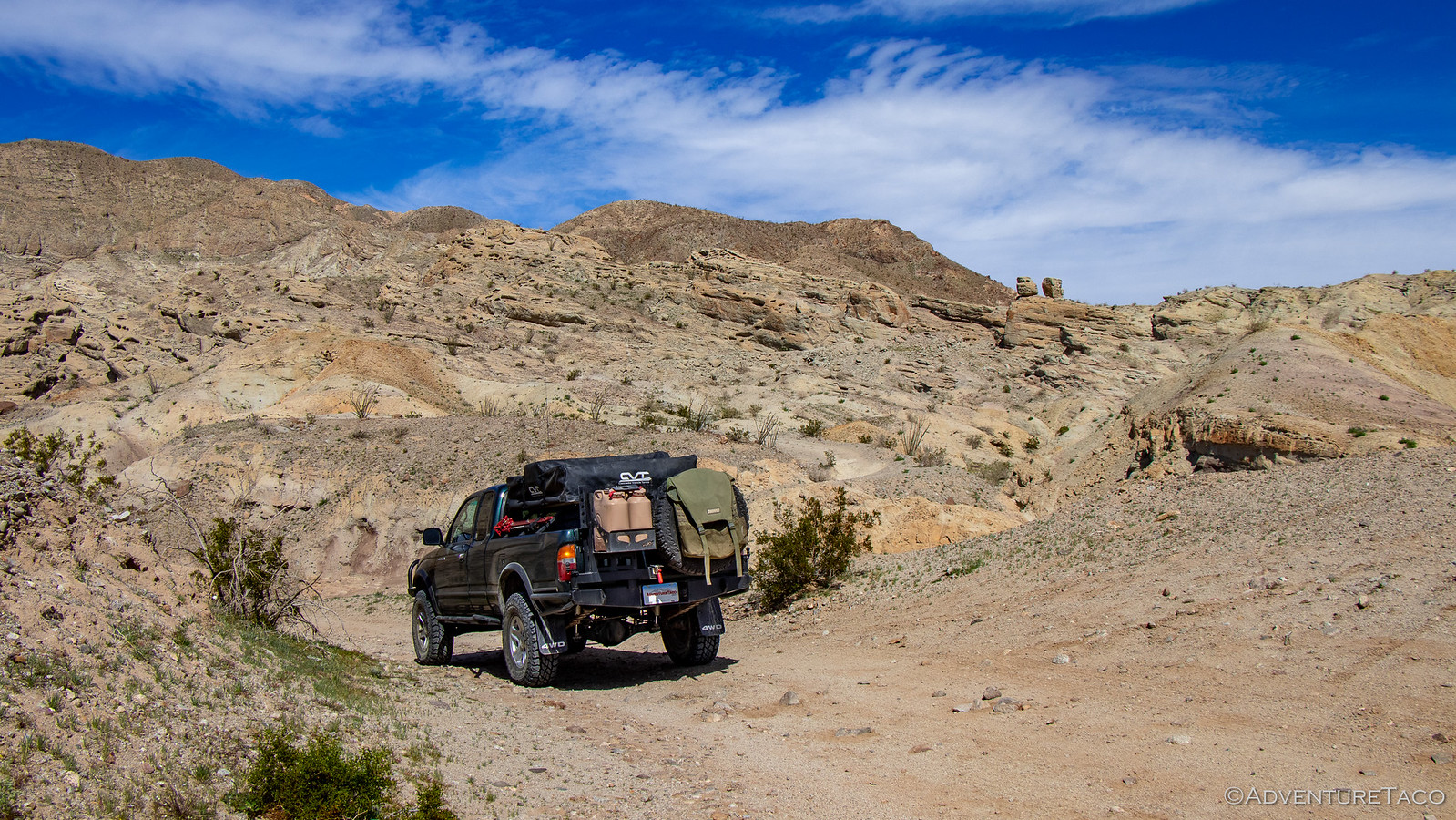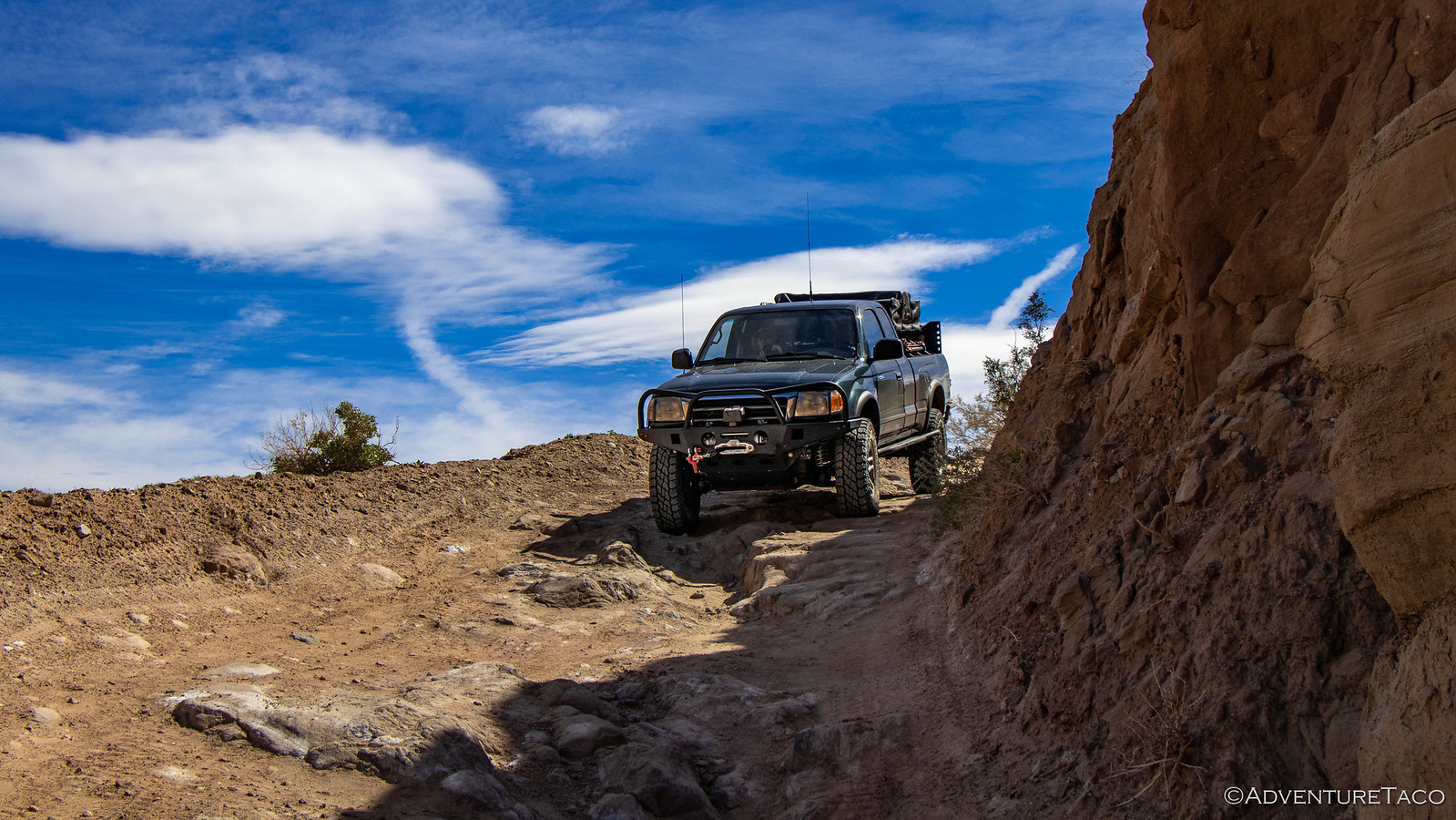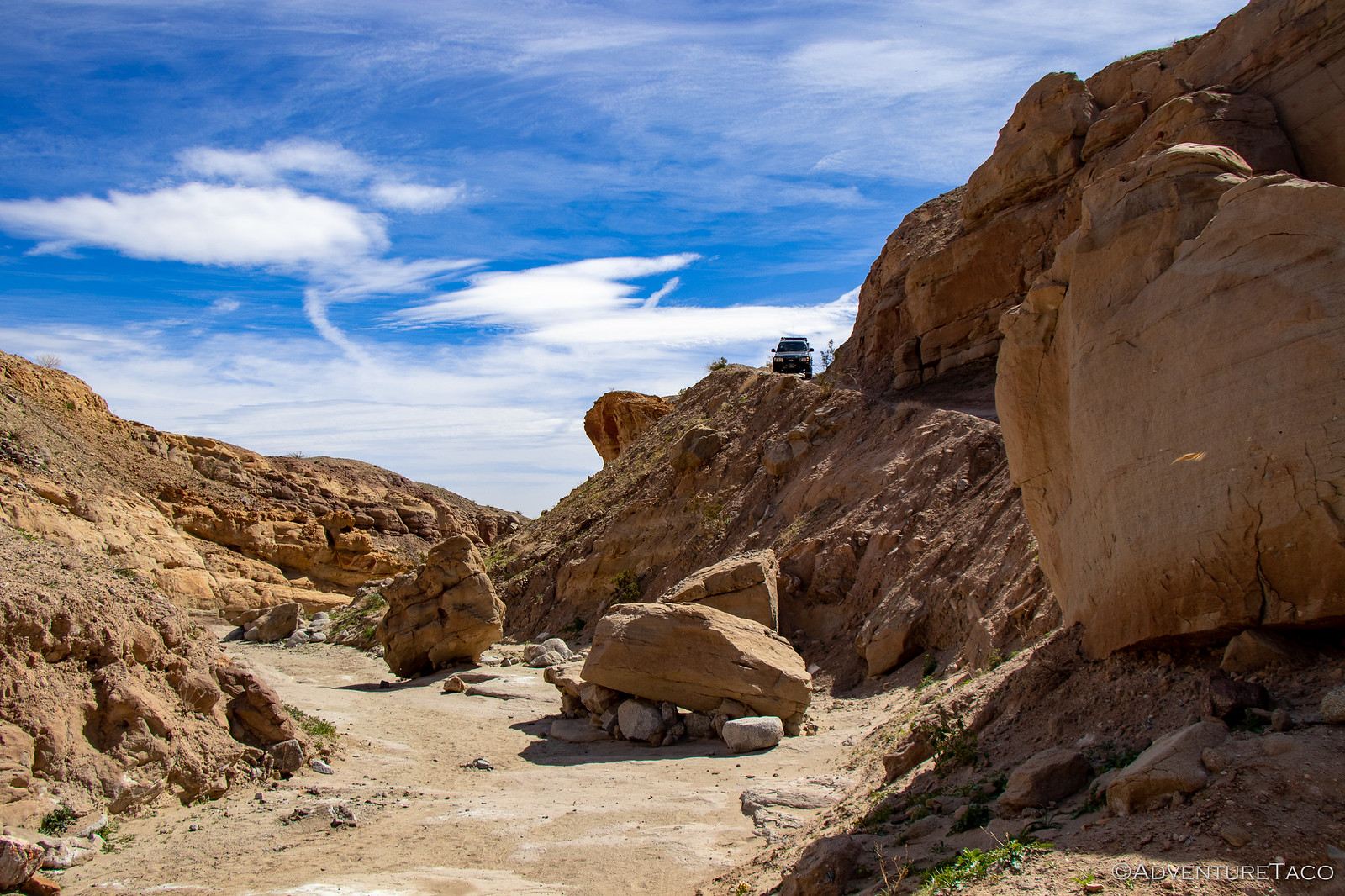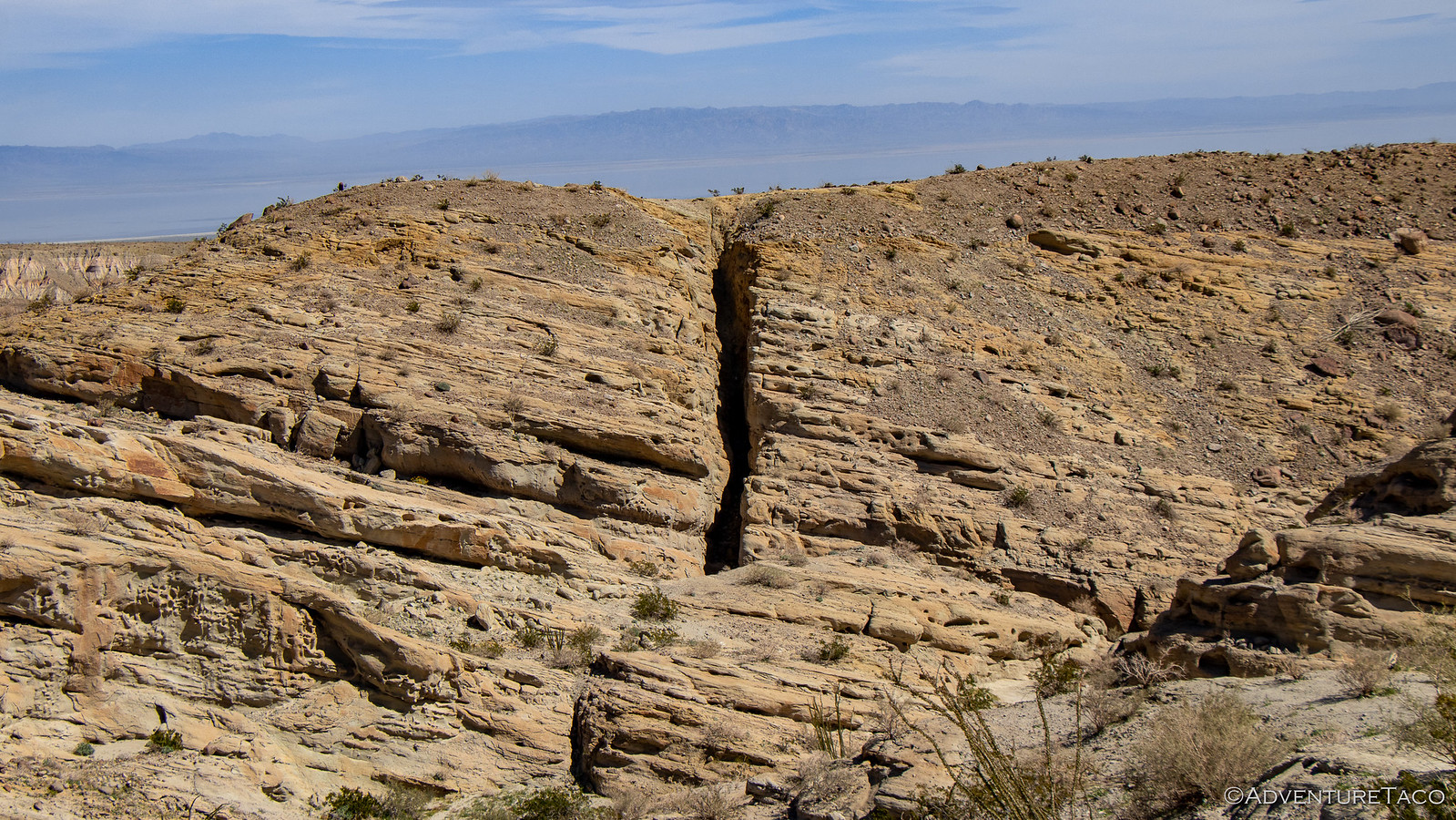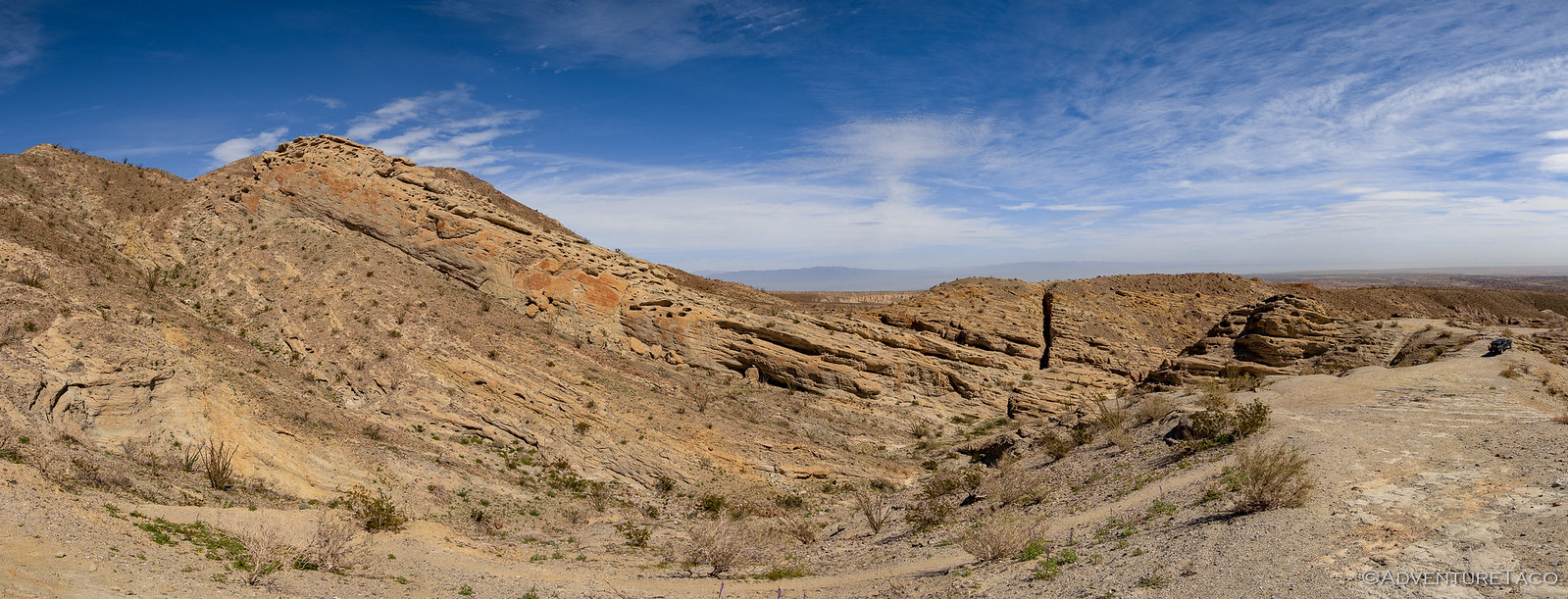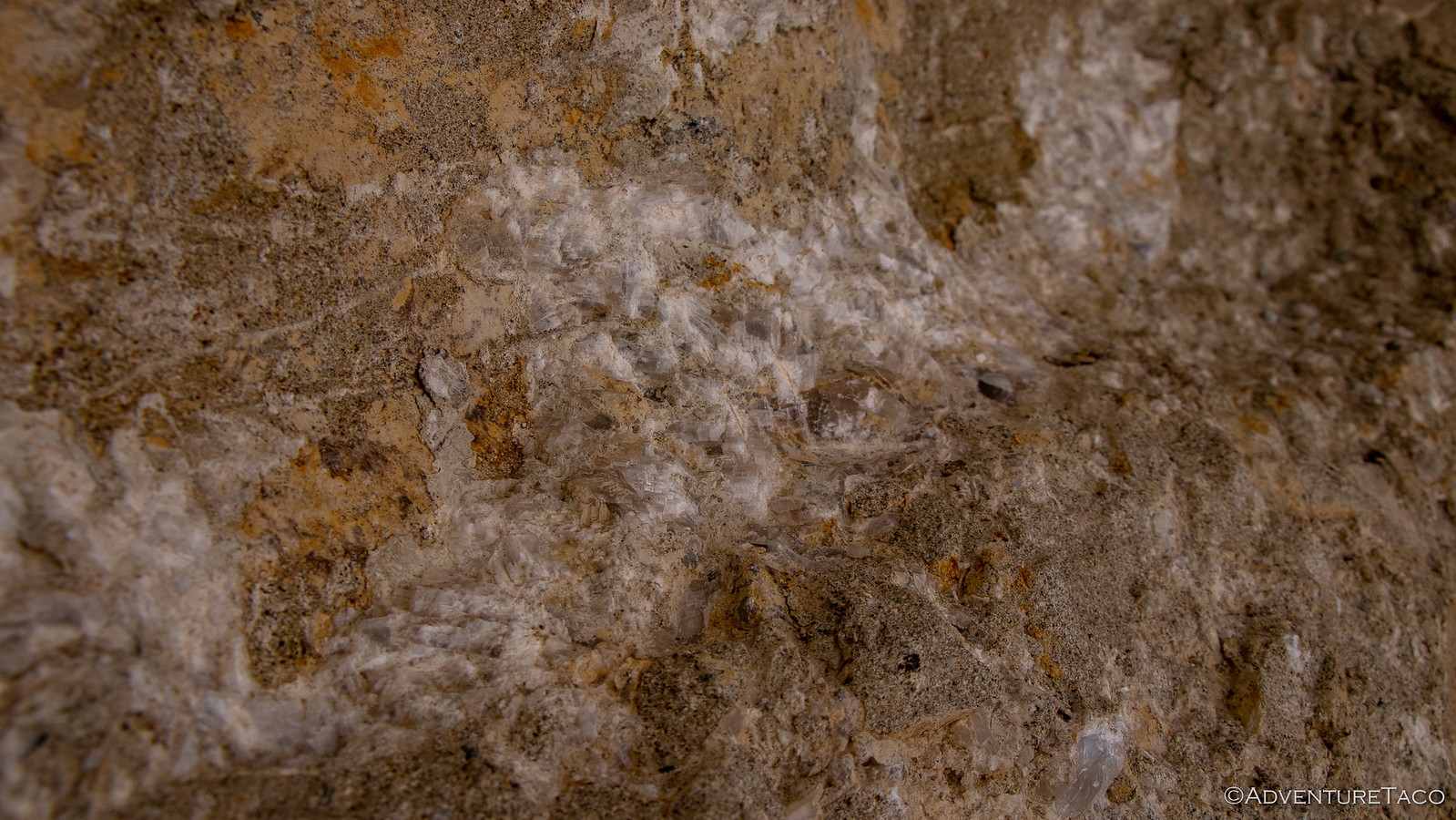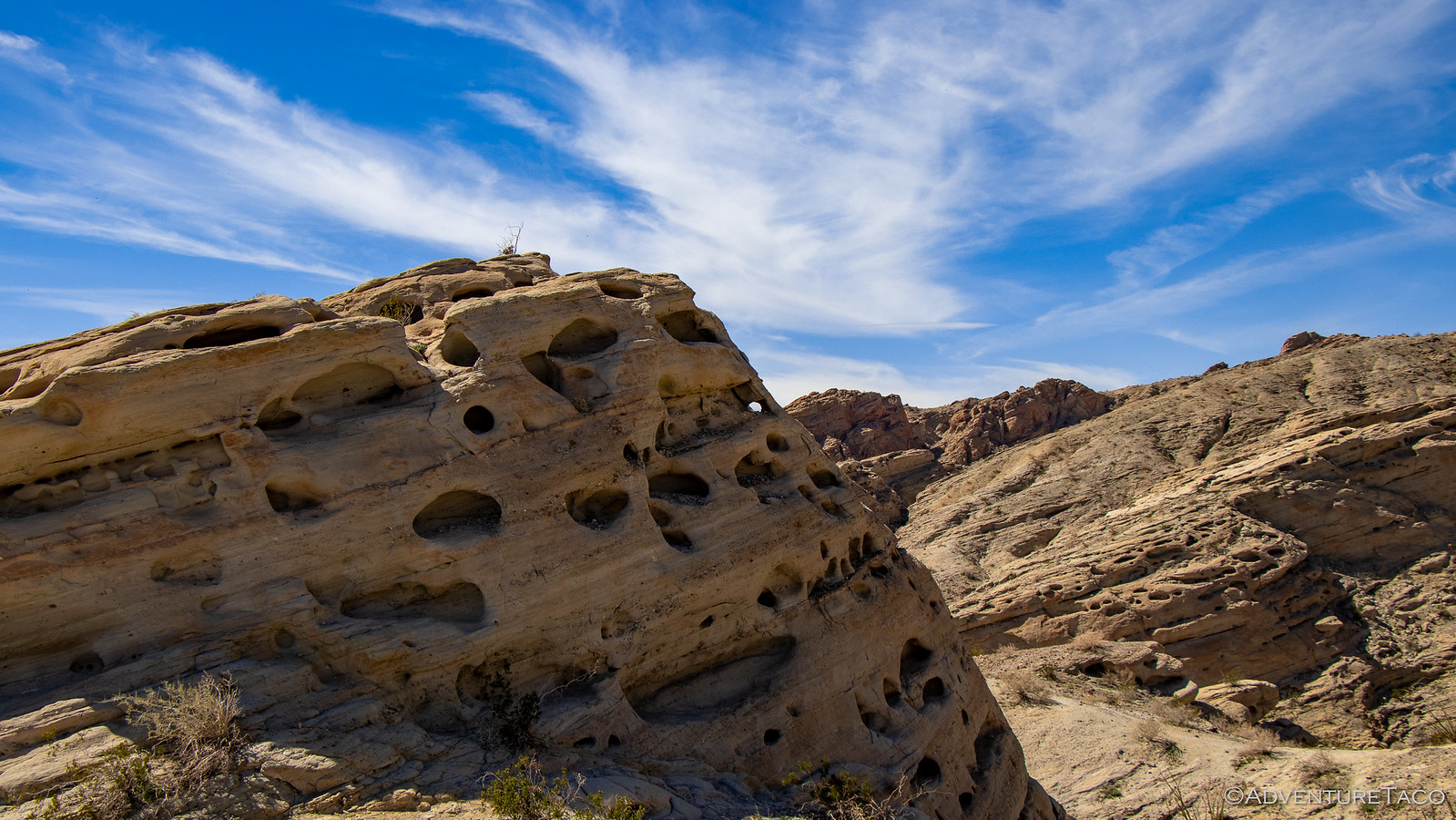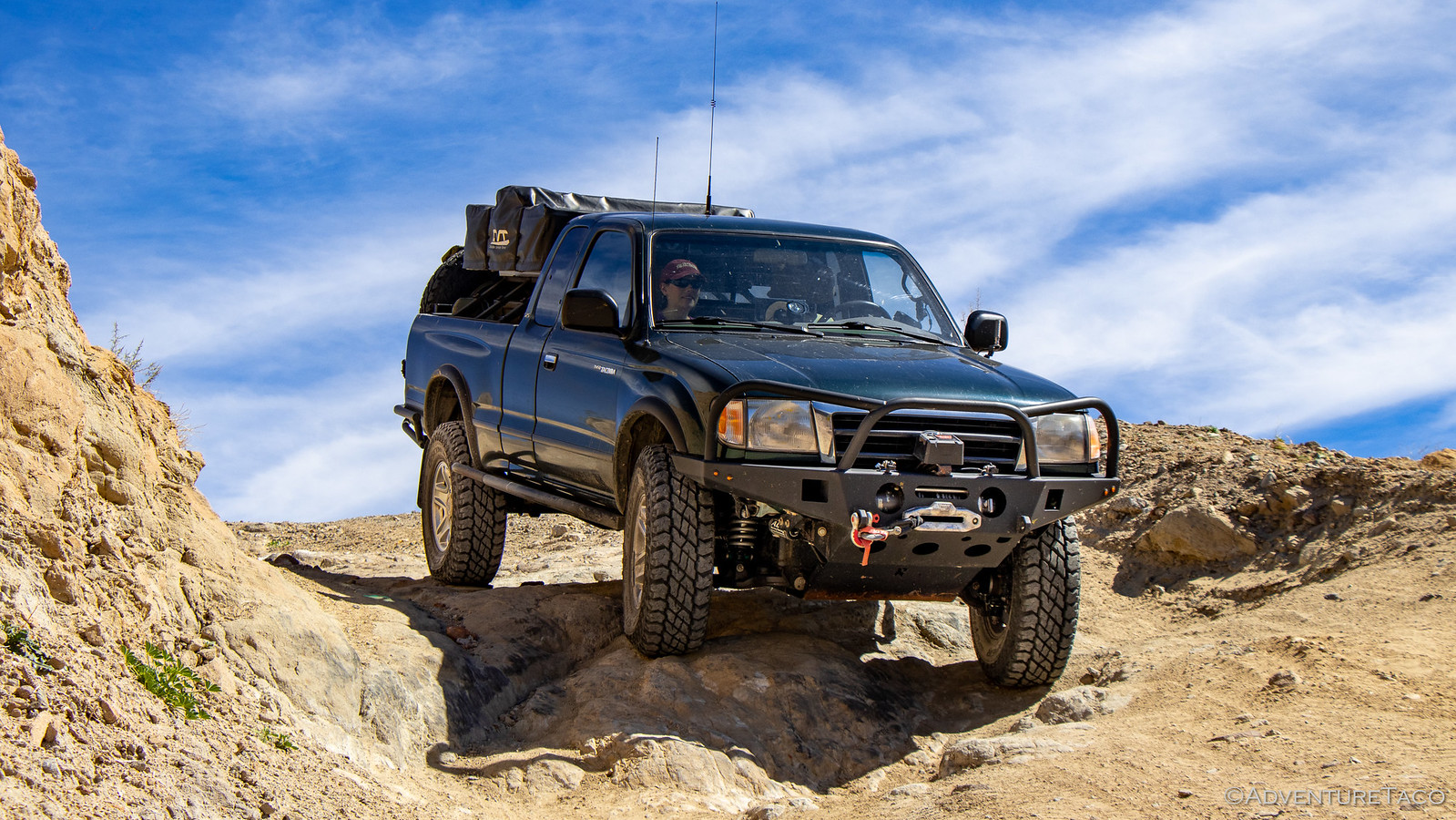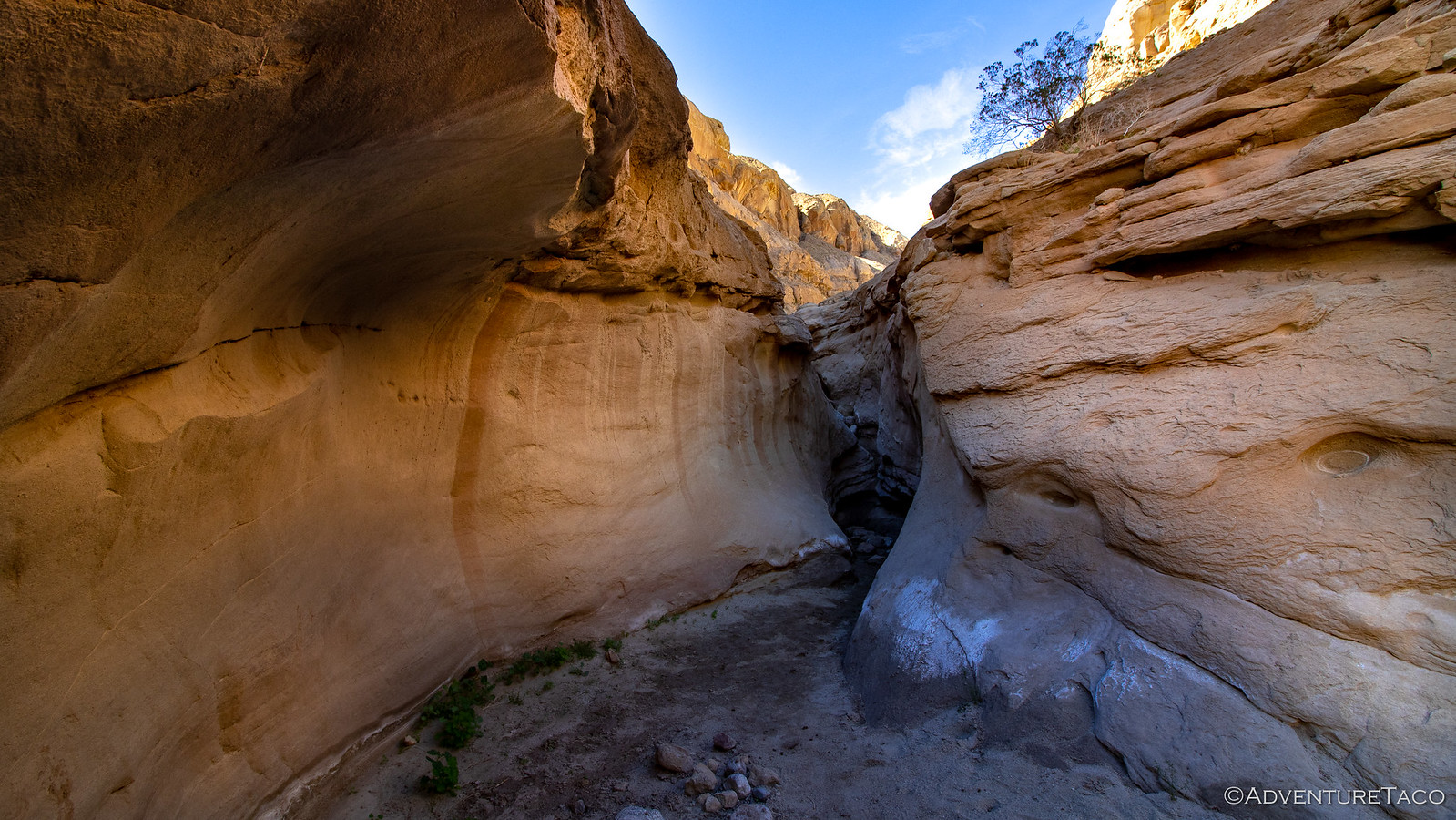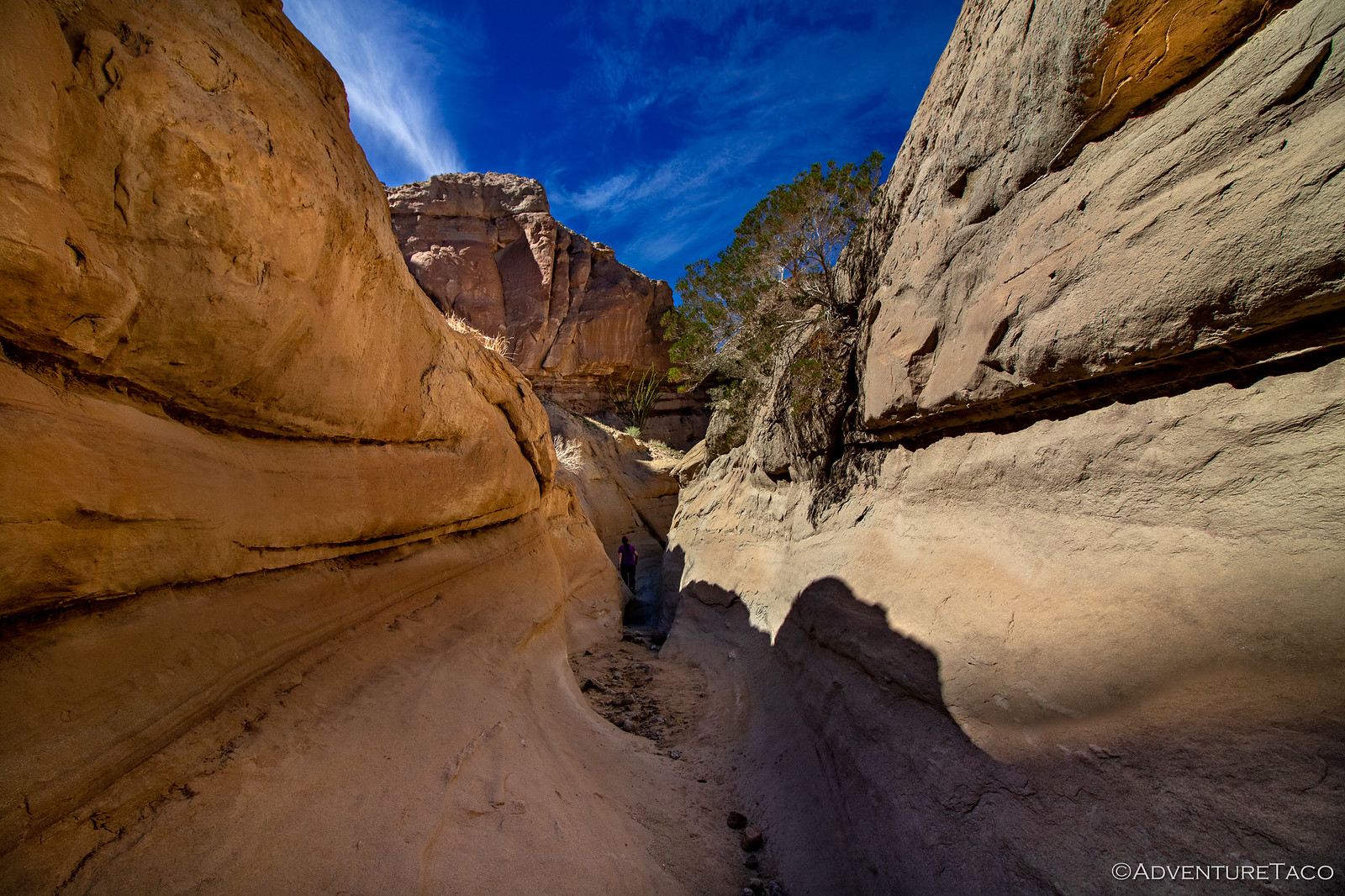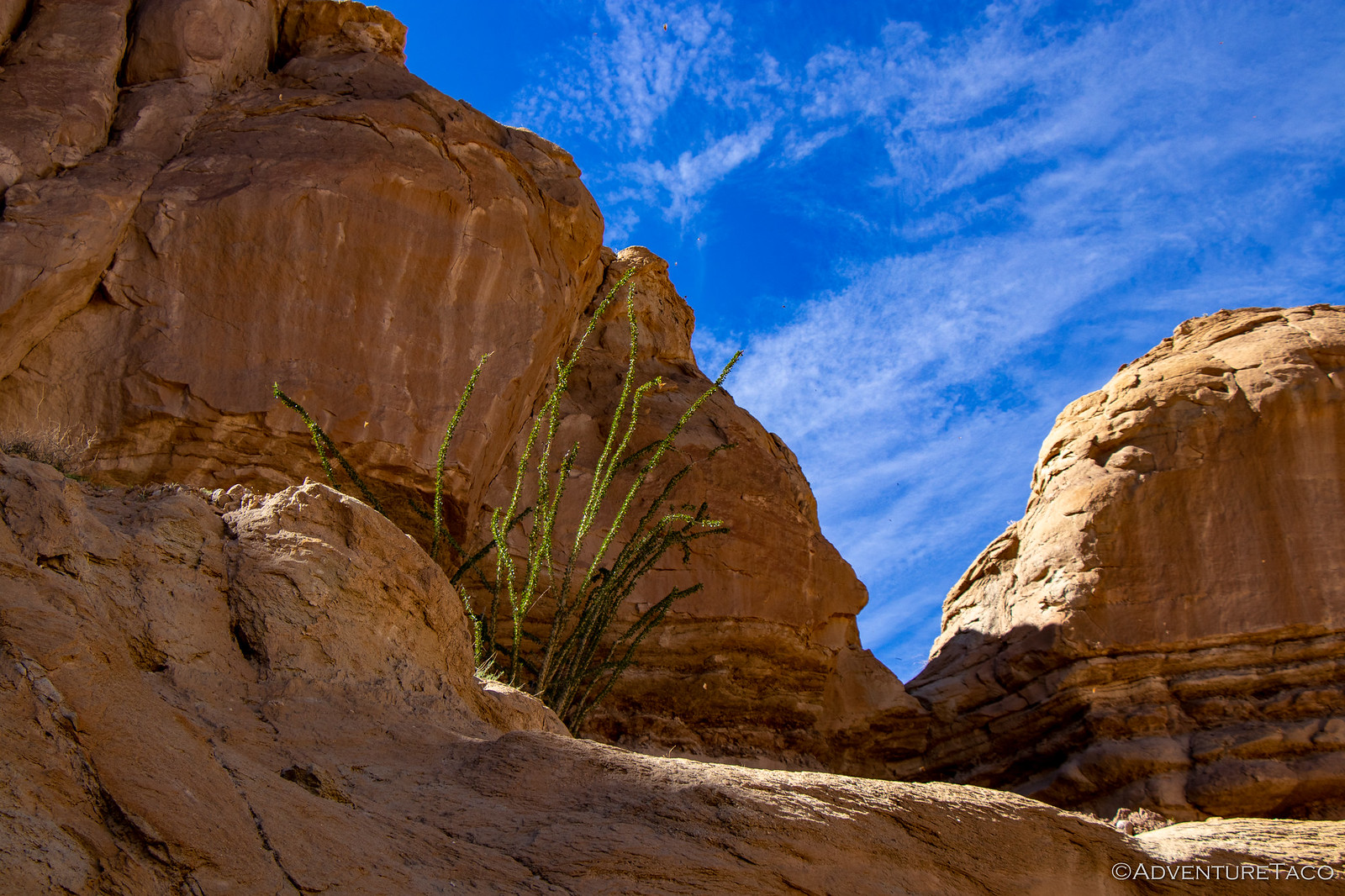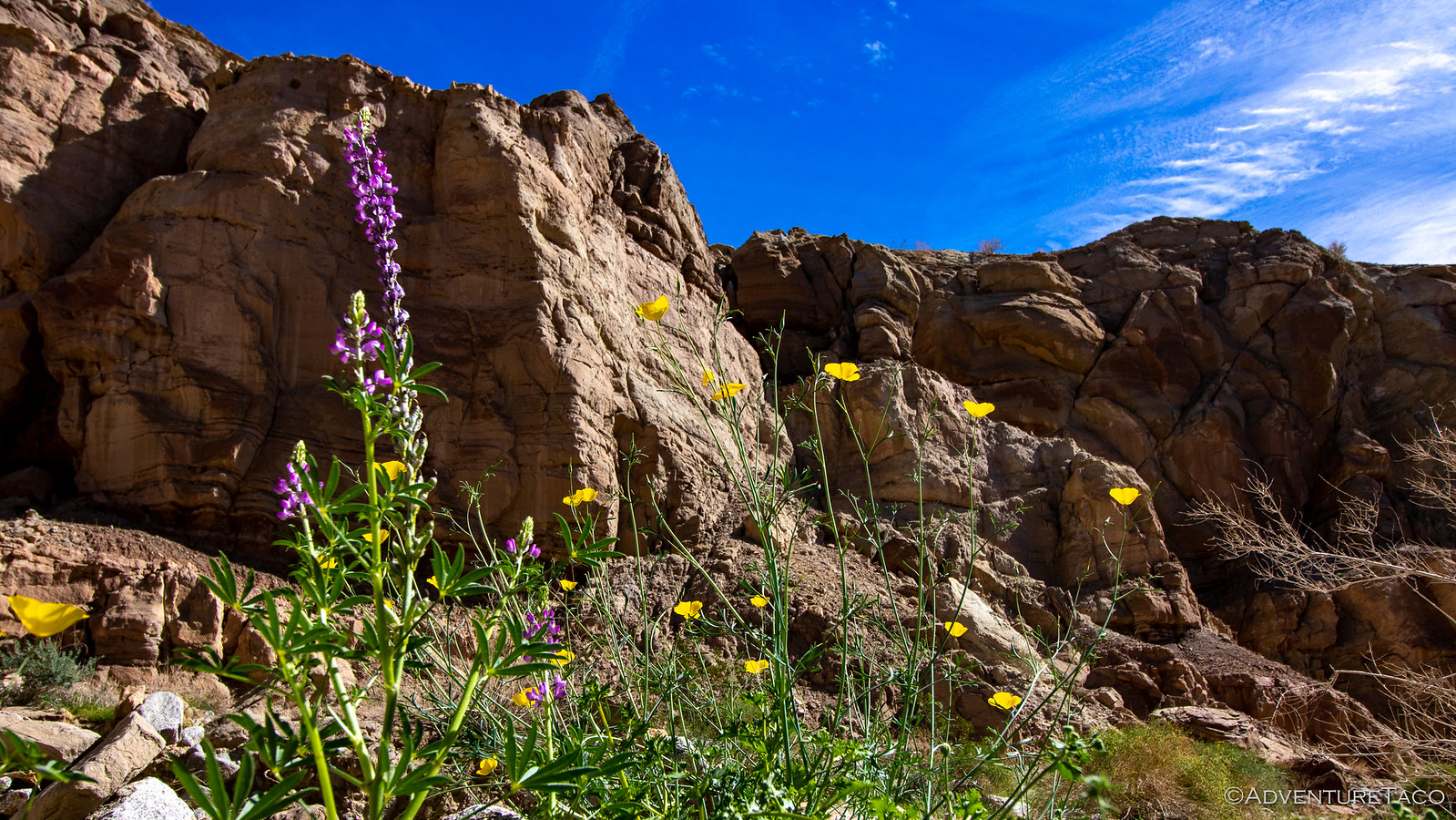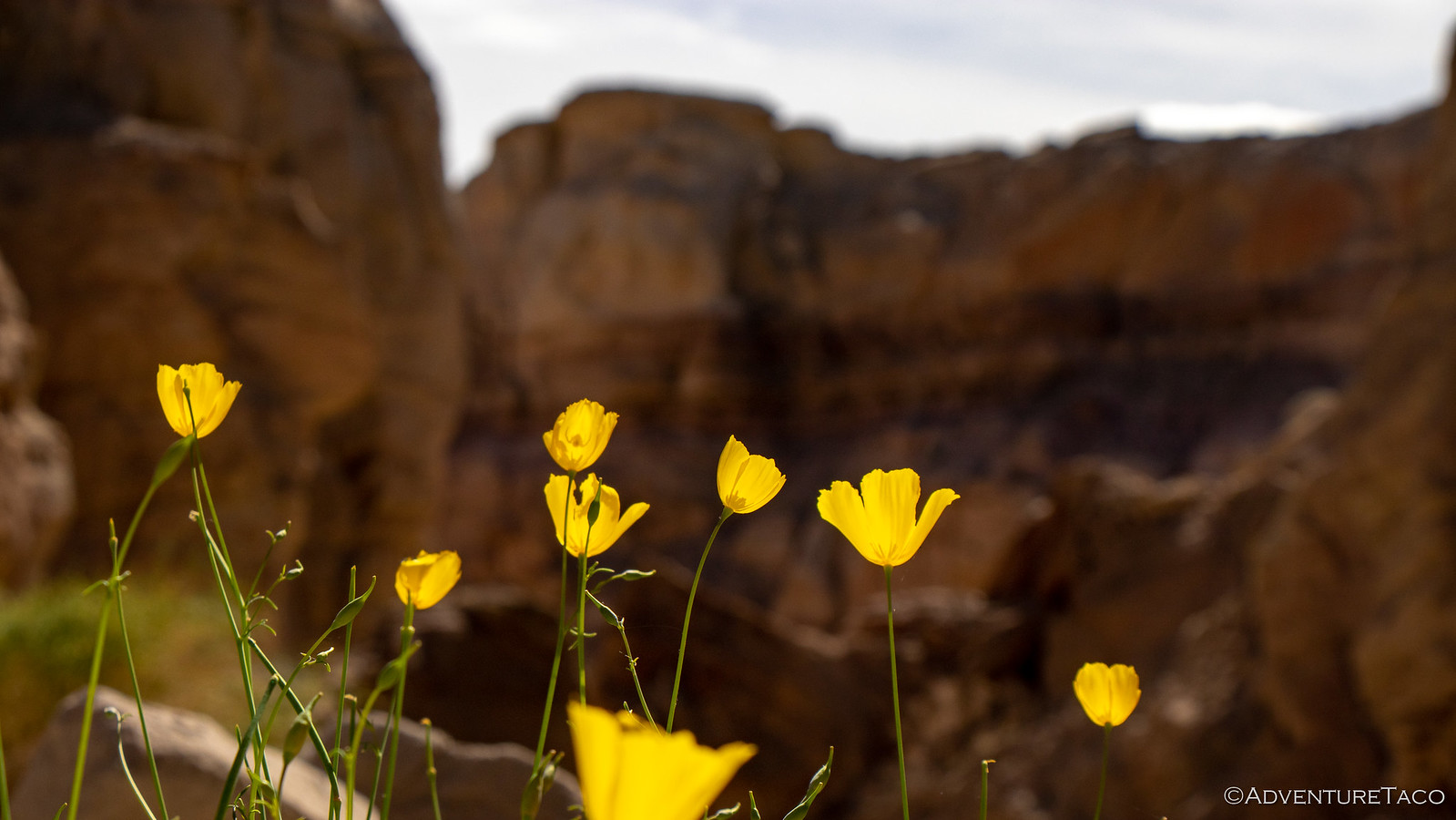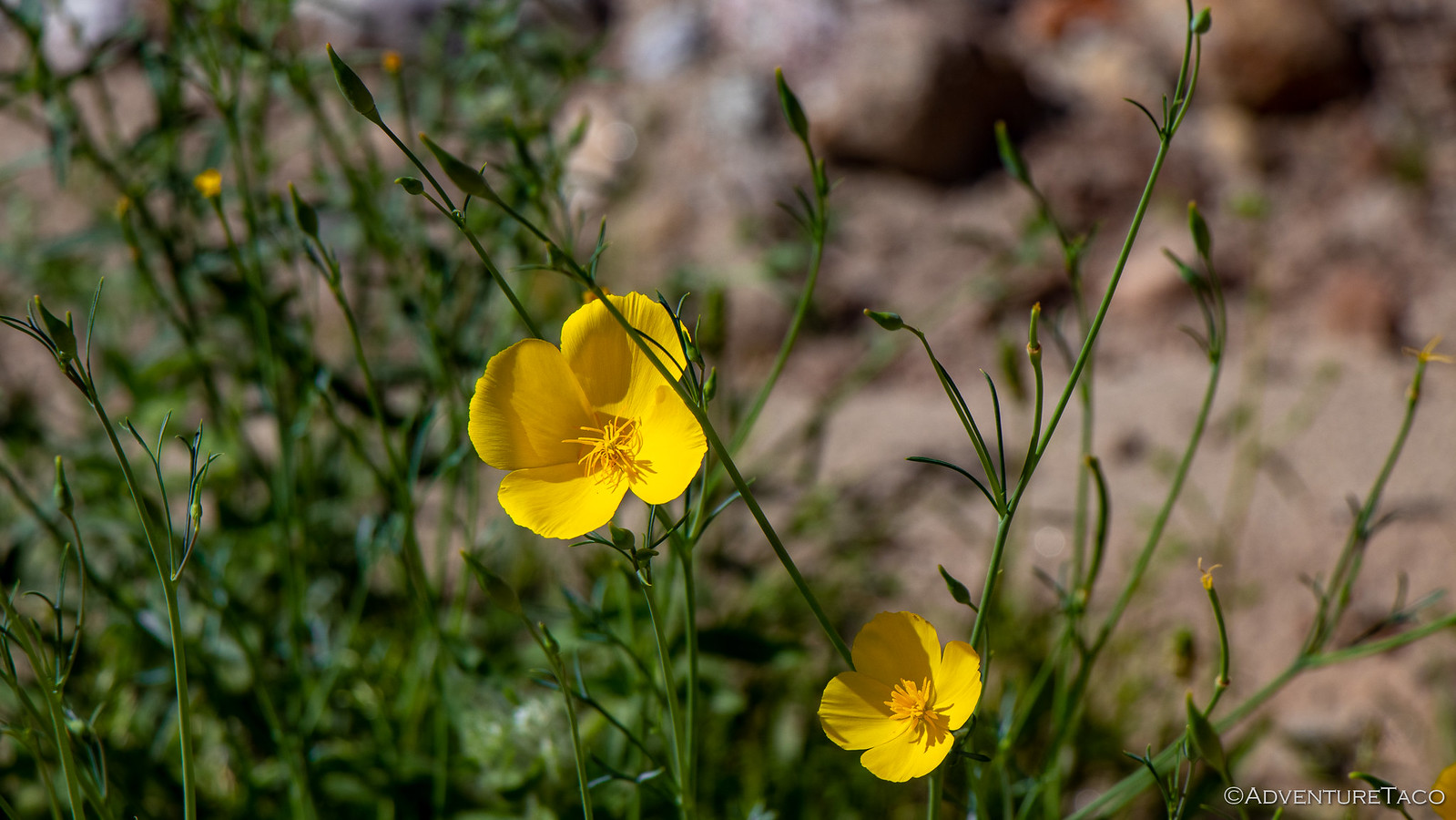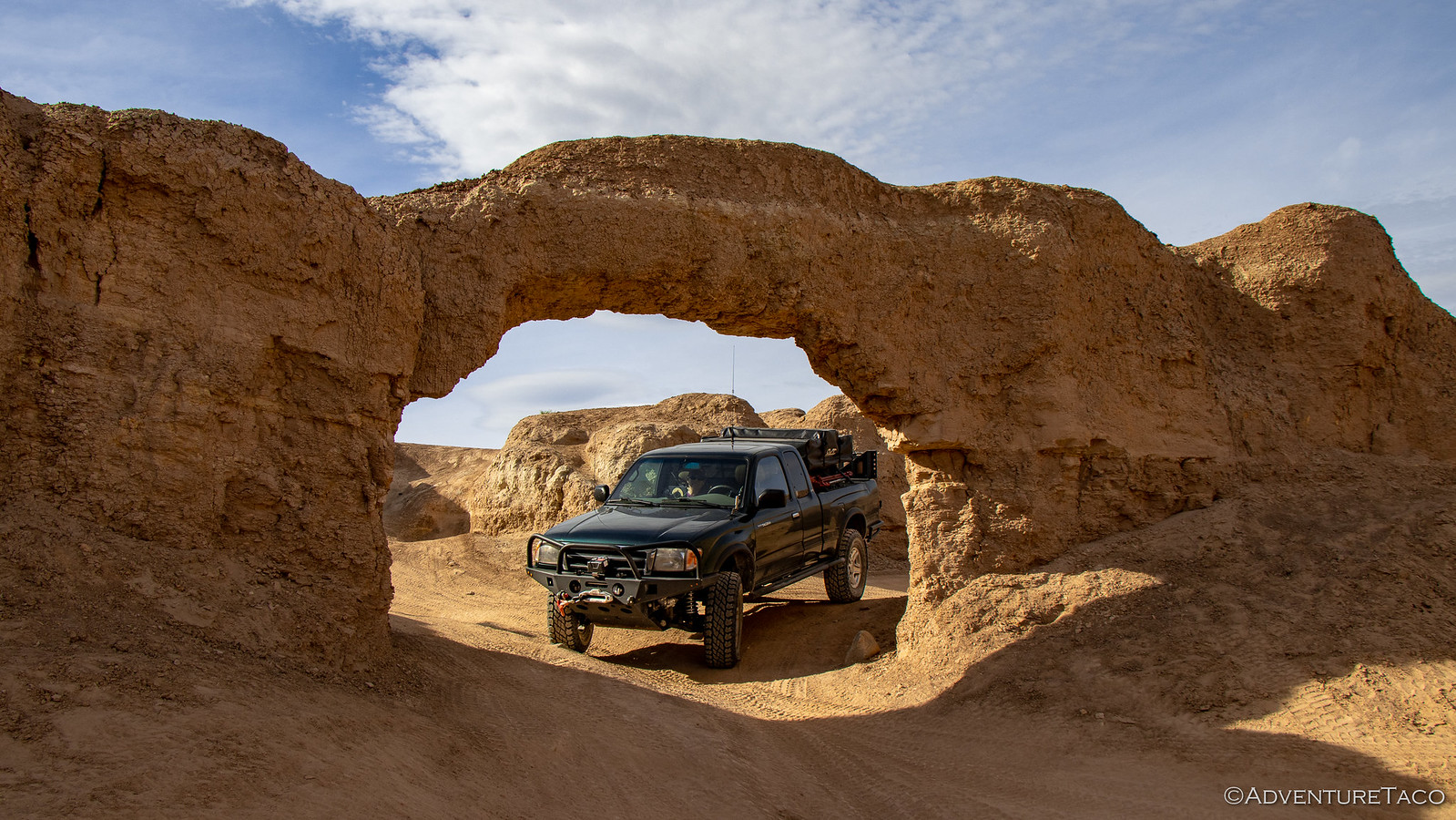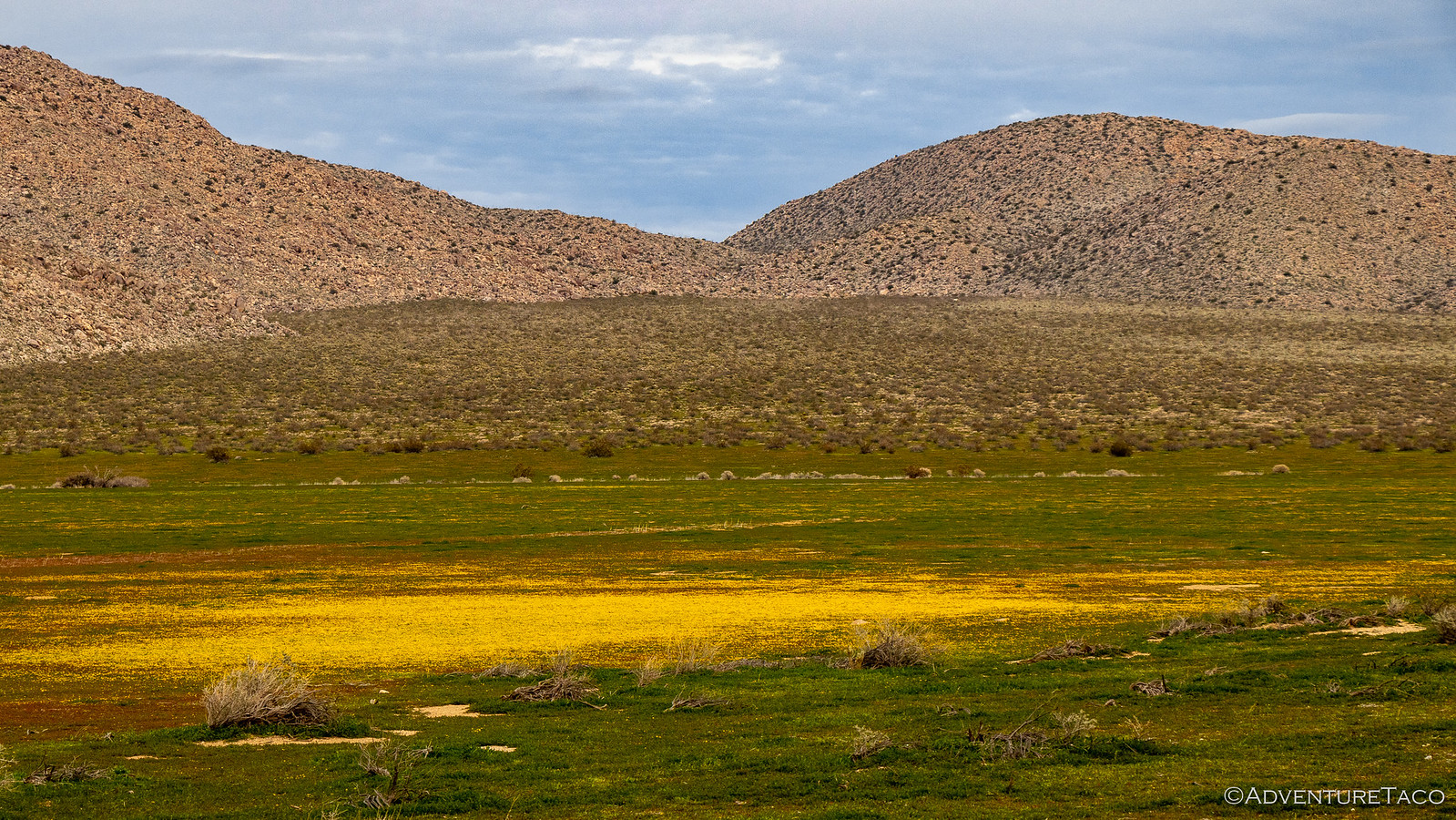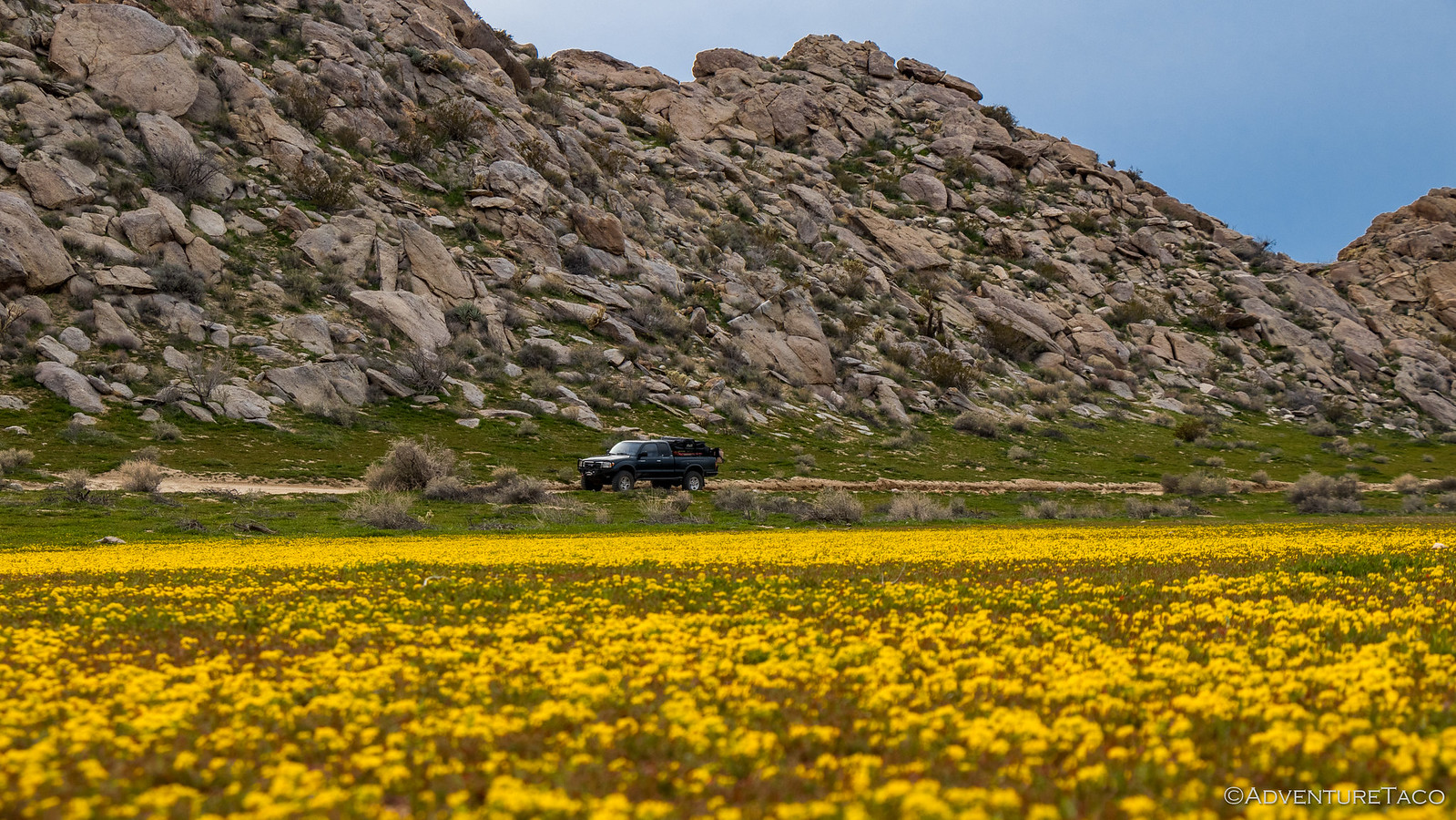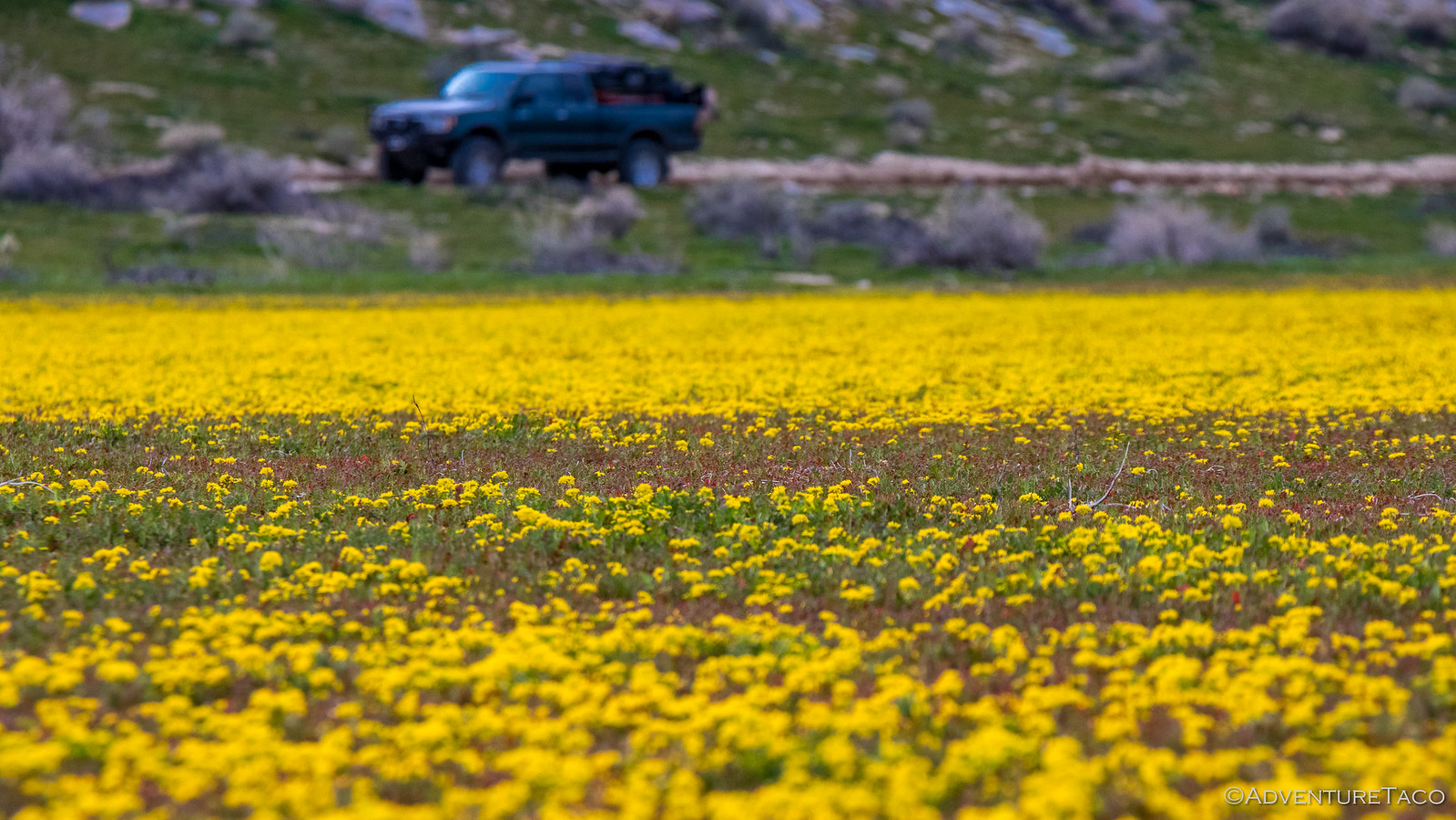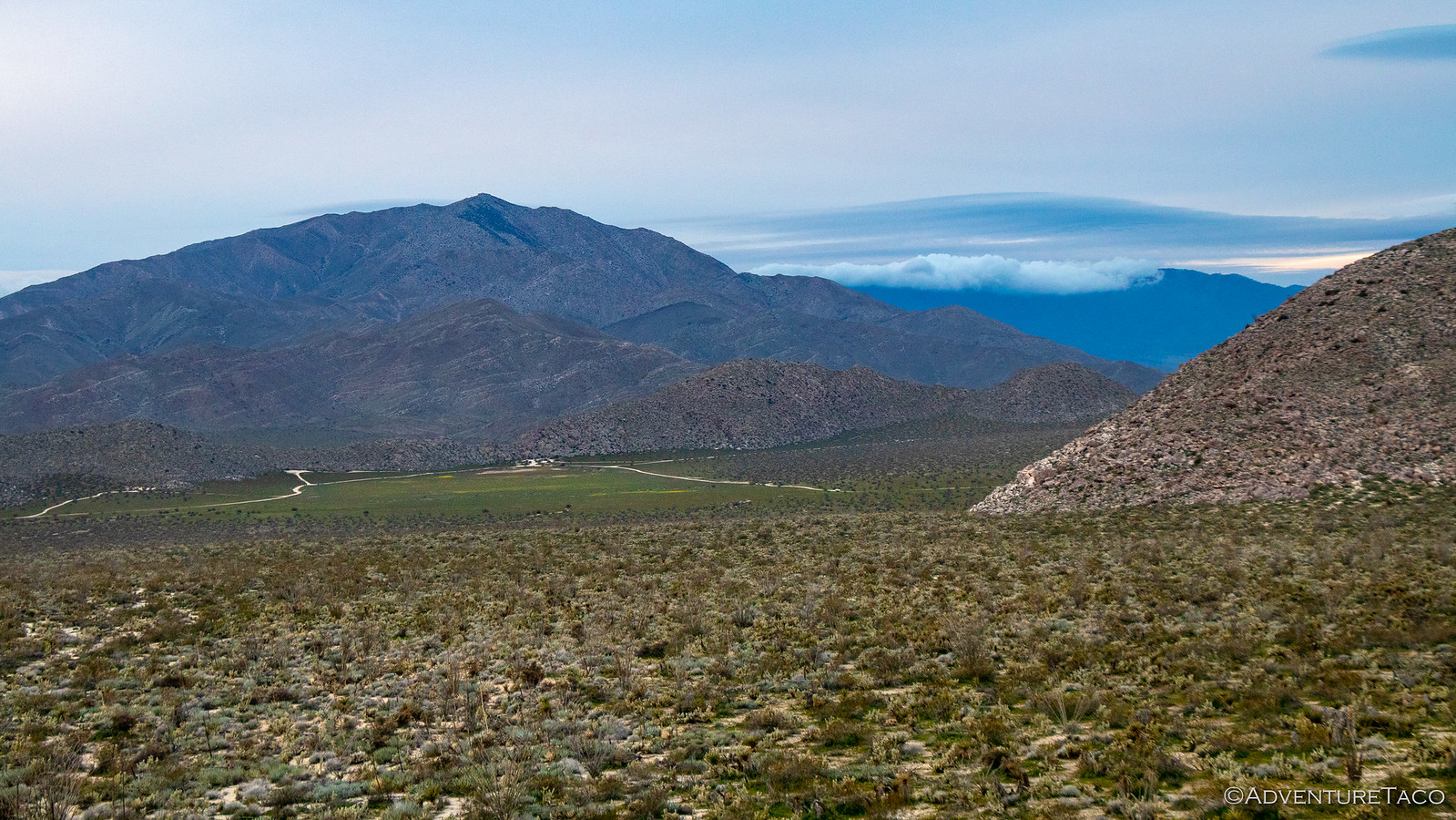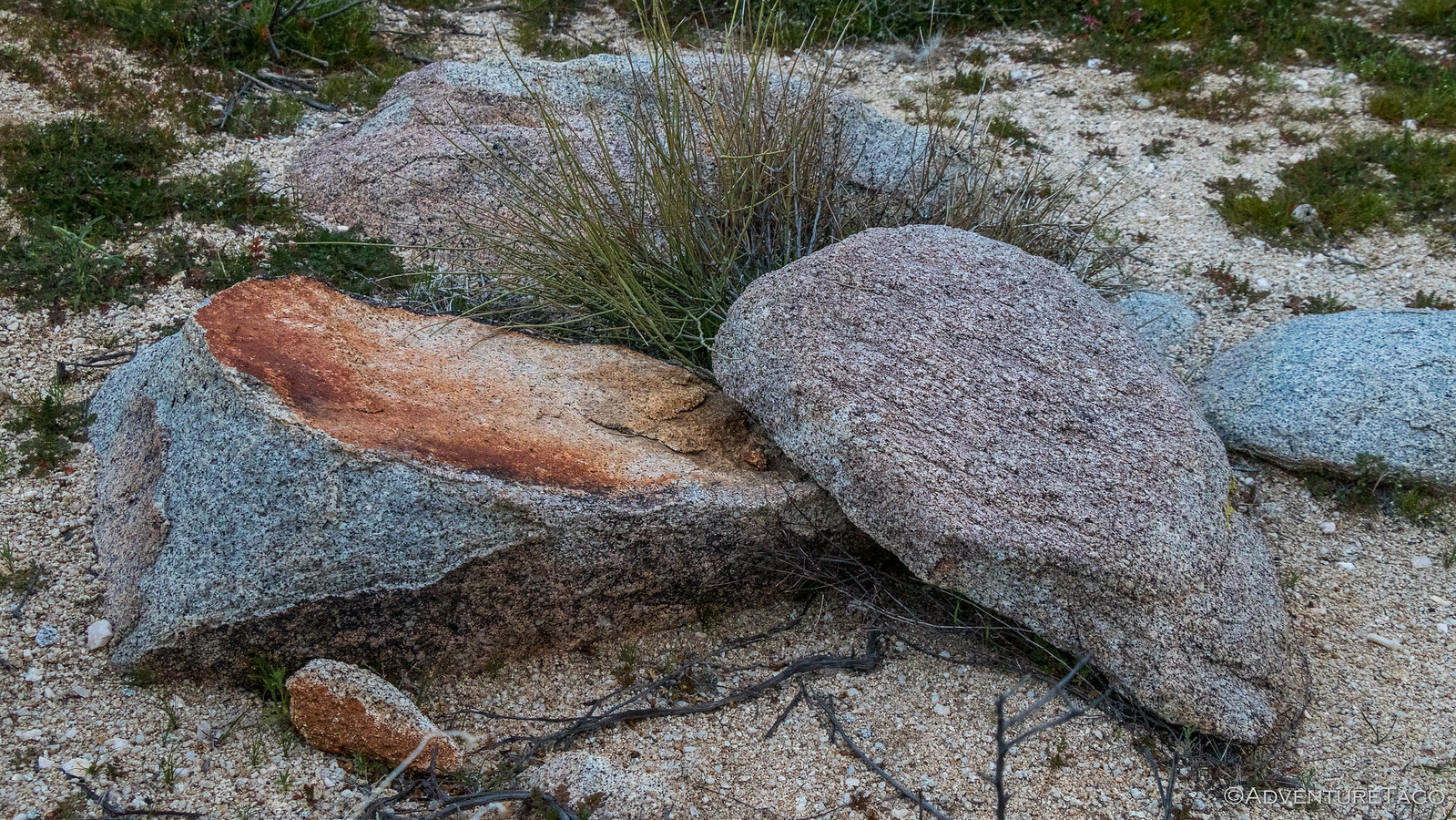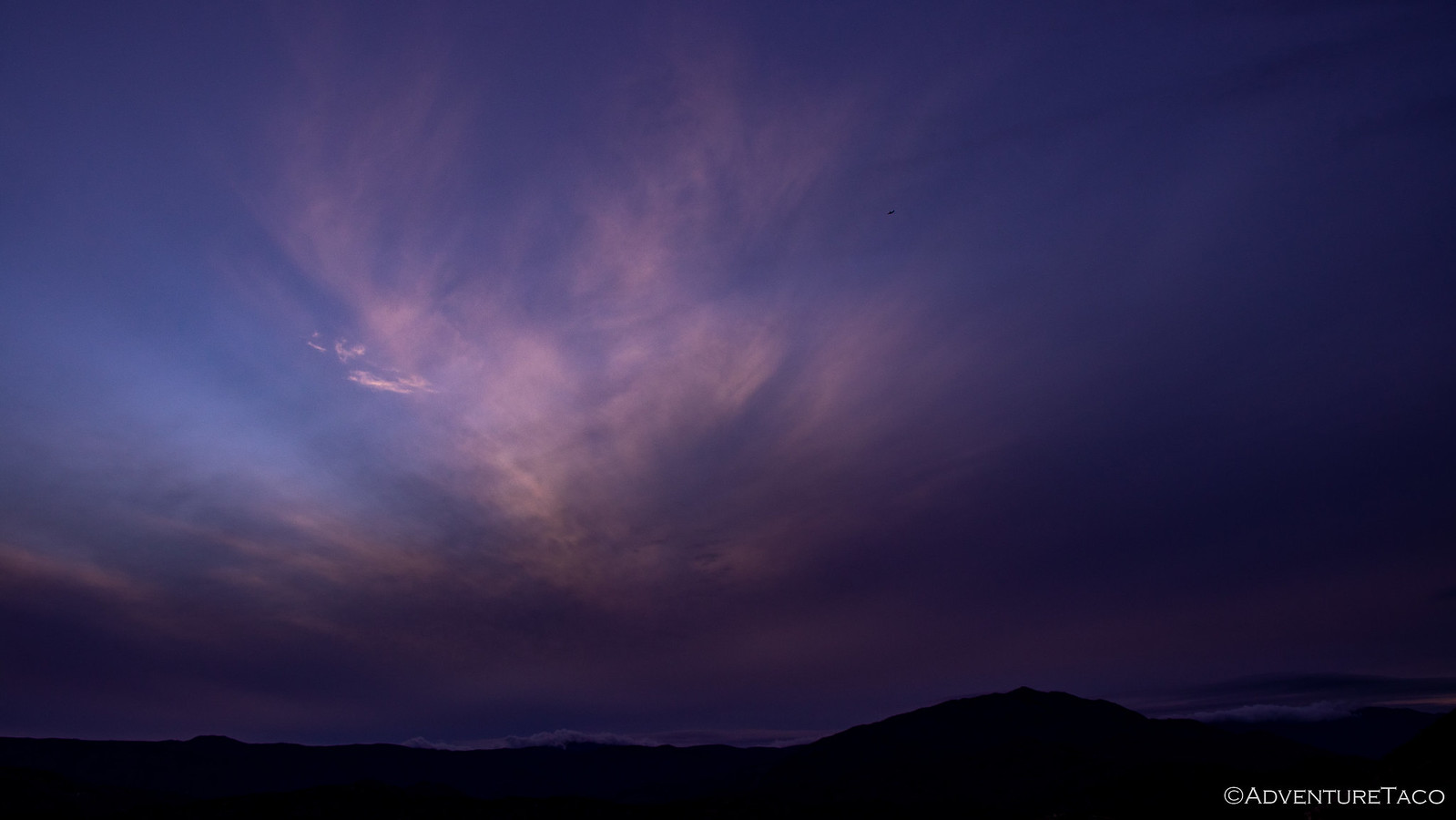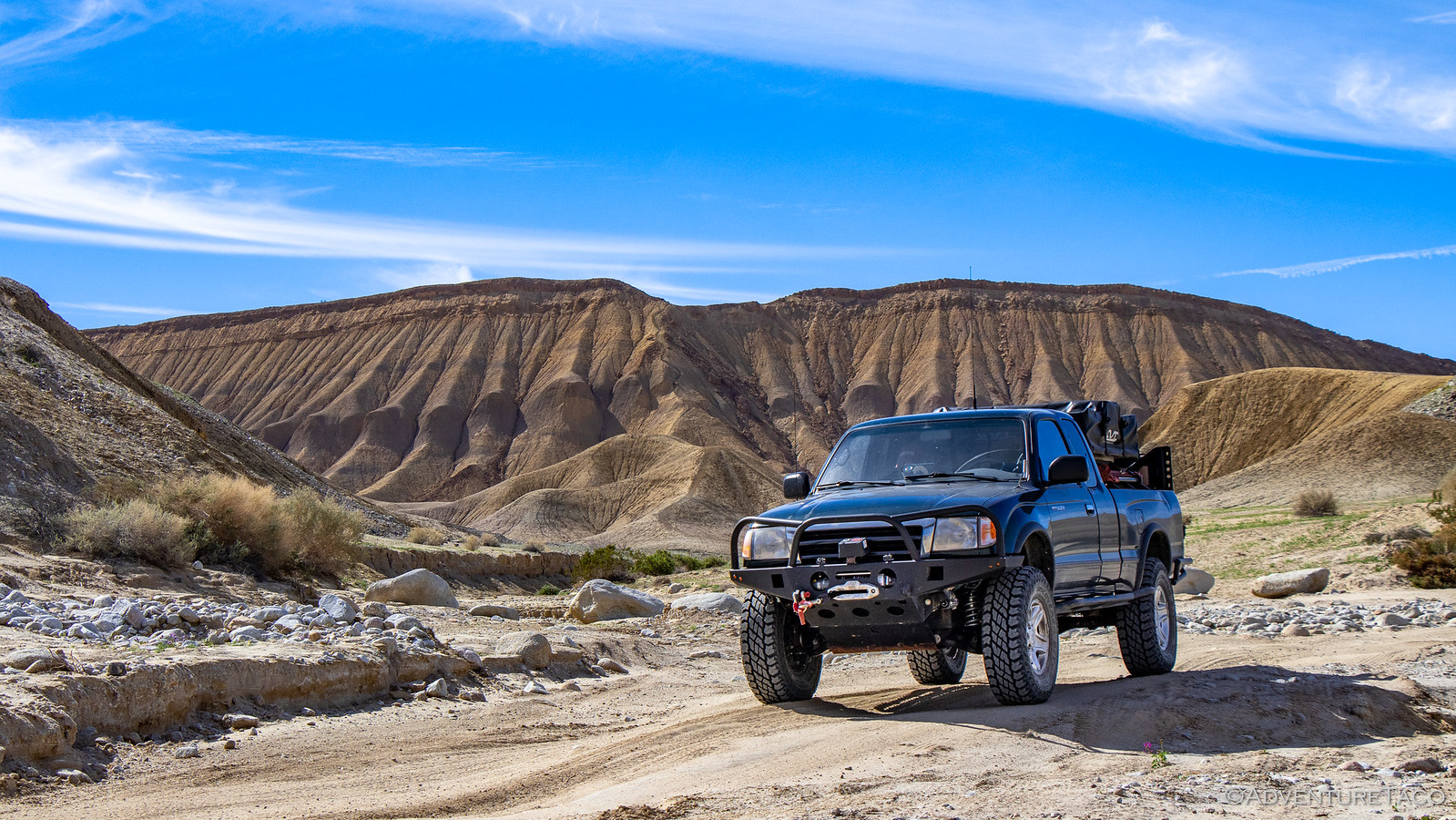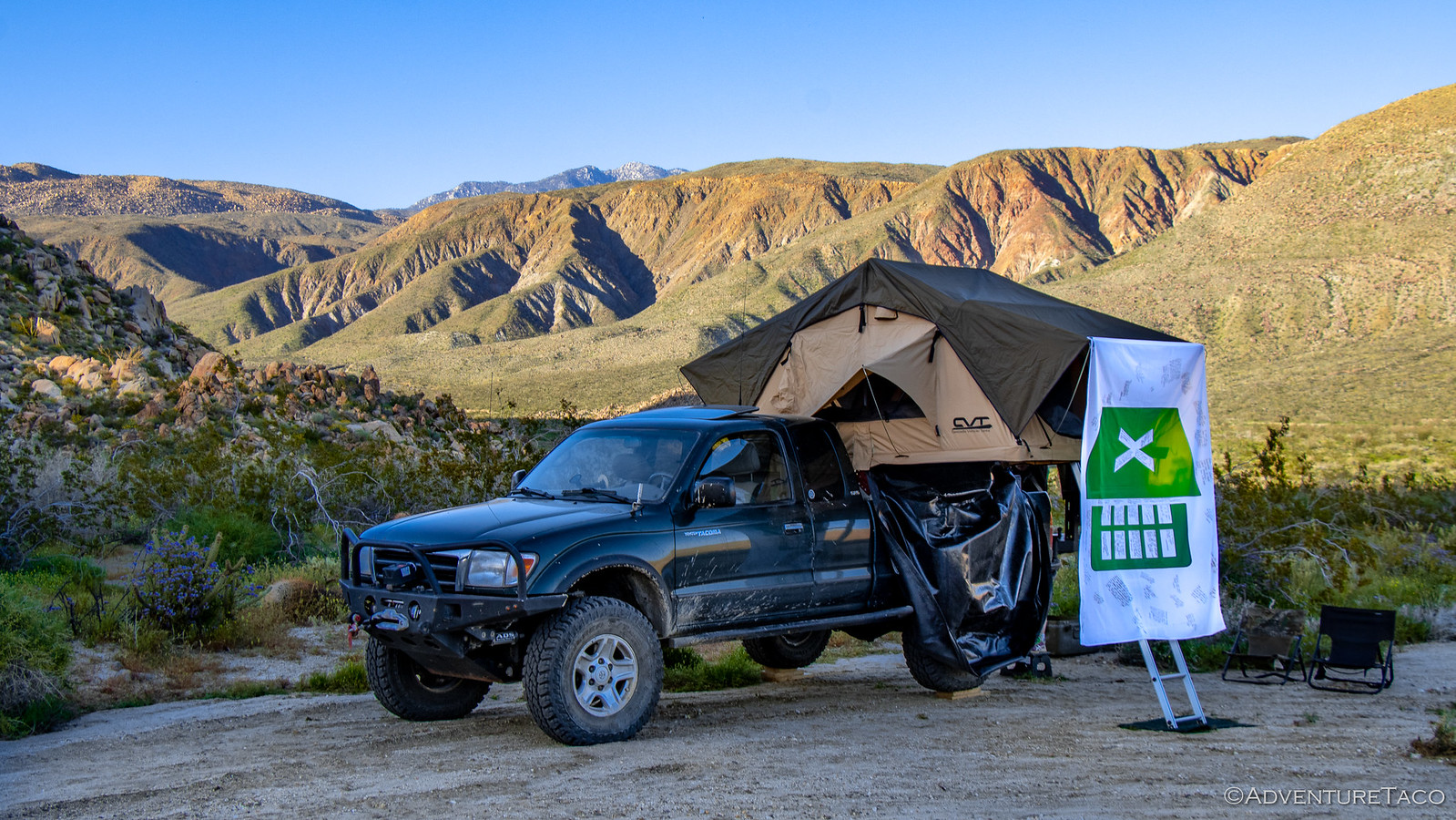We slept well through the night - my only complaint really being that at 55º-60ºF, it was too warm and I woke up a bit sweaty somewhere around 2:00am. It was a simple enough fix to remove one of the comforters from my side, and I quickly fell back asleep until my sunrise alarm went off way too early.
I wasn't sure exactly when sunrise was going to be, so I'd set the alarm for 5:15am. Turns out that 5:45am would have been a better time to catch the morning color. Perhaps a bit out of character, @mrs.turbodb was keen to see sunrise over the badlands as well, so as she got dressed, I took a few photos around camp.
It was a beautiful morning.
The pinks and purples of the desert sky always catch me off guard, and this morning was no exception. As we walked the last half-mile to the Vista del Mal Pais, we marveled at the marbling above us - knowing that by the time we reached the overlook, it'd be but a memory - the sun's movement too quick in situations such as these.
Not that we had anything to complain about when we reached our destination. The badlands stretched far and wide in front of us. Kept company by the owner of the 1st gen Tacoma who'd parked at the end of the road, we spent a good half hour or more just enjoying the view as the sky got gradually brighter - all of us with our cameras at the ready, not wanting to miss a moment.
The rising sun also gave us our first good glimpse of what would become a theme for the trip: wildflowers! While not technically a super-bloom, the desert was alive with color. Purples, whites, yellows, and reds topped off a blanket of green that shows itself only fleetingly each year.
Eventually it was time to head back to camp for breakfast - we had a long day ahead of us and I had a couple things I wanted to do in camp before we got underway. The first was to adjust the spare tire on the rear swing-arm. I'd installed it before leaving home - as always - but as we'd tried to mount the Trasharoo the day before, I noticed that the tire was sucked up against the swing-out. I quickly realized that this was due to the increased backspacing - 4.5" instead of the 3.5" on my SCS Stealth6's - on the new-to-me 4Runner wheels that I was sporting for the first time on this trip in an effort to reduce mud fling. The great thing about the @cbi offroad fab spare tire mount is that it's easily adjustable - so I zipped off the three lug nuts holding the tire on and moved the mount an inch away from the swing-arm. Five minutes, and I was done.
Next, I wanted to switch up the rain fly on the CVT Mt. Shasta. As I've mentioned, I really dislike the stargazer windows because they take a long time to dry when they get wet. So I worked with Bobby over at @cascadia tents to get a new fly without the windows (something that new versions of the tent apparently come with now), and this was the perfect time to get it installed. I removed the old one, got the poles in the new one, and was just getting it secured to the corners of the tent when @mrs.turbodb said, "Umm, I don't think you got the right fly." Turns out I'd been sent a fly for an extended series tent and sure enough, it wasn't going to work on my standard series.
That didn't make me super happy, and I grumbled as I re-installed the old fly. Luckily for me, a tasty breakfast of cereal and blueberries had been prepared and helped to raise my spirits once again. Plus, I have no doubt that Bobby will make this right - it'll just have to wait for a future trip!
Soon, we were ready to go, and we headed down Shorty Wash towards Arroyo Salado to see what the day had in store.
The sandy washes were fun to drive in and we made reasonably good time except for me stopping every couple minutes to take pictures. But really, how could anyone resist - the sun was out and the weather was a far cry better than the snow we'd left in Washington!
Now, we were on Arroyo Salado for a very specific purpose - I wanted to see a couple of landmarks along the route. Specifically, I wanted to see 17 Palms, 5 Palms, and Una Palma. Turns out that the first two wouldn't be an issue, but Una Palma is... well... Sin Palma at the moment. 

It wasn't long before we rolled up to 17 Palms and got out to explore. As is the case with most good folks who stumble across these oasis in the desert, we assumed that we'd find both shade and water as we neared the California Fan Palms. As it turns out - like many before us - the second half of that assumption turned out to be incorrect.
Still, it was a sight to behold, and @mrs.turbodb was quick to wander over and start counting the twenty-seven palms that made up 17 Palms spring!
We explored a bit, finding a post of bottle caps and a hidden mailbox stuffed with guest books, which we gladly signed before making our retreat back to the truck.
Even as we left the spring, the spring season was apparent all around us - even the driest cracked desert floor teaming with life - small succulents pushing through and making themselves known.
Windows down and fan blowing in the truck, we were back in the wash - winding our way in and out of the mud/sand mounds that made up this badland-y area. A fun and beautiful landscape to drive - new colorful views around nearly every corner. And it wasn't long before we found ourselves approaching 5 Palms - the tops of the trees visible a few hills away. As we approached, @mrs.turbodb educated me a bit on the trees themselves - turns out that California Fan Palms are the only palm native to the Western United States, and are "left over" from a tropical climate in the Miocene era, some 8 to 20 million years ago! (see Anza-Borrego A to Z: People, Places, and Things by Diana Lindsay)
Naturally, we spent some more time exploring 5 Palms. Or, at this moment, 4 (+1 dead) Palms.
From here, we had a choice - we could head back to pavement the way we'd come the previous evening, or we could venture along some dirt roads to see what they had in store. OK, it wasn't much of a choice really - we were taking the dirt less traveled - so we ventured south on Thule Wash in search of a strange sounding landmark: The Pumpkin Patch.
When we arrived, there couldn't have been a better description for what we saw. There, strewn across the ground were hundreds of stone pumpkins. Not actually, of course - but it sure looked strange.
Turns out that these pumpkins are created from a single small "seed" - a pebble, an actual seed - that finds itself in a river bed as sediment is laid down. Over time, each layer of sediment builds up on the seed, enlarging it until - hundreds or thousands of years later - it's a pumpkin-sized stone.
However, even that is not where the story ends with the pumpkins - but that was something we discover until later! For now, we headed north again - to Truckhaven Trail, a trail that would deposit us at the start of our next adventure.
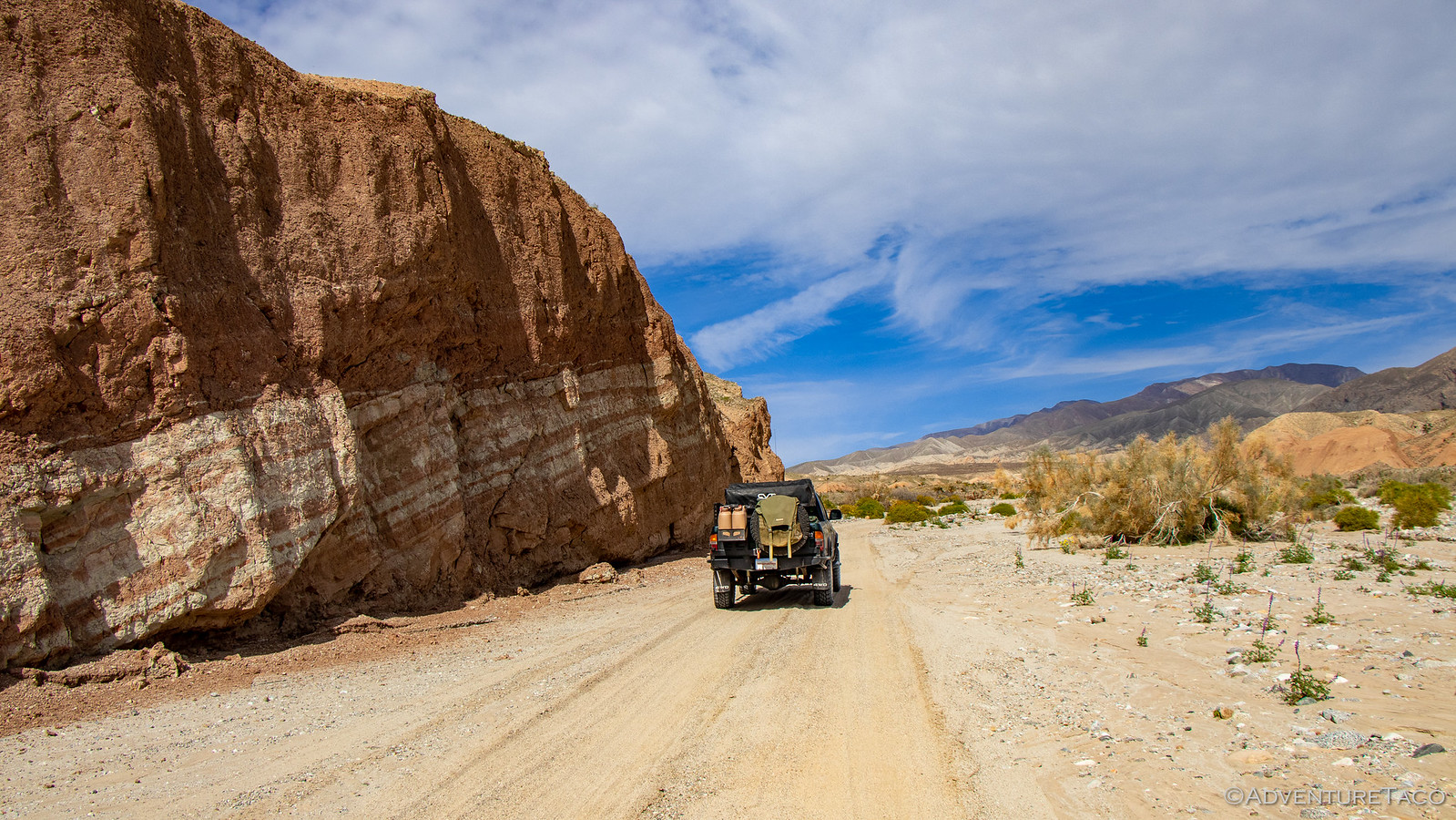
Bacon Rock, one of the tastiest in Anza-Borrego.
As we went, that constant theme of spring was visible once again - flowers were blooming everywhere, including a few early specimens of desert lily.
As we reached the end of Truckhaven Trail - or at least it's intersection with S22 - it was nearing noon. Lunch time for most, we were eager to push forward, our stomachs not yet grumbling at us to feed them. And so it was that we pushed forward - forward onto the most technical trail we'd complete on these first few days in Anza-Borrego: Calcite Mine.
OK, before we go any further, I need to clarify something. Calcite Mine isn't all that tough of a trail. Sure, it was the most technical that we completed, but save for a few narrow-and-off-camber bits that make the humans in the vehicle uncomfortable, there wasn't anything that really stressed the truck in any meaningful way. It was unique in one way though - it was the only trail we didn't see any other traffic on, and that was nice!
As we started up the trail, we passed a couple groups of hikers - their expressions betraying their thoughts of "I wish I was driving this instead of walking" - before hitting the first obstacle - a bit of ledge that would keep lower clearance vehicles at bay.
We continued up into the mountain, winding our way higher, the views getting better all the time. Over various V-notches and ruts in the road, rough patches and washouts, we made our way along slowly and carefully - eventually coming to a drop down into and then back up out of a small wash just a quarter mile or so from the mine.
The grainy, sandy trail was a generally straight-forward traverse, with only one steep, mogully section where we benefited from a short bump-up with the rear locker. And then, we were at the top.
There isn't much left of Calcite Mine it turns out. In fact, if I didn't know I was at a mine site, I probably wouldn't have noticed the tell-tale signs of the mining activity - a handful of channels carved into the mountains, where veins of calcite had been removed by the Polaroid Corporation during WWII in order to manufacture optical-grade crystals for gun sights and rocket launchers for the U.S. government.
But once you know what you're looking for, they are obvious - and fun to explore, the remnants of several small calcite veins still embedded in the walls.
We also spent some time exploring the wind caves at the mine site - both because they were super-cool looking, and also because they offered a bit of shade from the beating, mid-day sun. Little did we know that these wouldn't be the last wind caves we saw on this trip!
Our bellies now telling us it was time to eat, we decided that the best course of action would be to head back down the mountain to find some shade in a canyon below - after-all, the trail was only a couple miles long, and we weren't even going all the way back, having found a short connector to our next trail: Palm Wash.
The short connector between trails was a fun one - a steep, off-camber turn near it's bottom providing a bit of excitement but no real problem for a capable 4WD - and from there it really was only a couple minutes to the end of the wash. This was going to be a great spot for lunch - there was a nice shady area where we could enjoy freshly made turkey sandwiches loaded with pickles, tomatoes, lettuce, and condiments along with potato chips and a cool, crisp apple. Tasty.
It also turned out to be a great place for a bit of exploration, @mrs.turbodb having discovered that the end of the wash was the beginning of a short hike to the "Sheep Tanks:"
The Sheep Tanks are in a small arroyo entering from the west (left) into a small circular bay in the wash just beyond the fairly deep sandstone cut. About 100 yards beyond the boulder-choked entrance is the first of three tanks, sparkling like a deep green jewel under the 50-foot cliffs. Access to view the other two tans is by scaling the near-vertical south wall onto a wide sandstone shelf. They lie in the bottom of a deep, inaccessible cleft. The capacity of the three tanks is about 20,000 gallons, enough to fill a backyard swimming pool. These are typical tinajas, desert basins that collect and hold rain water, which support animals.Anza-Borrego Desert Region: Your Complete Guide to the State Park and Adjacent Areas of the Western Colorado Desert
We set out and before long we found ourselves navigating a very cool slot canyon in search of the Sheep Tanks, the sun spilling down illuminating our way.
After a half mile or so - just a bit further than the 100 yards we were expecting! - we decided we must have taken a wrong turn somewhere. So we headed back to the only fork we'd seen and started up the adjoining wash, starting with the climb of a 20-foot dry fall. Again we explored up the wash - plenty to see, but nothing that looked like the aforementioned Sheep Tanks.
Eventually, we decided it was time to get moving with the rest of our day and we headed back to the truck. We hadn't found the tanks, but we'd had a great hike. It was only after we returned home and I looked up the tanks on the interwebs that I discovered that the trailhead for the tanks isn't actually at the end of the wash as suggested - it's a bit further down-wash... which means - as seems to be a trend with us - we have a reason to return! 
And so it was that we drove right past the trailhead as we made our way down the wash, oblivious to the mistake, and on our way to the Coral Wash Arch. An arch you can drive your truck through, I knew that this would likely be a trail where we'd see other vehicles, but even I wasn't prepared for what we encountered. Unknown to us, the 57th annual desert safari for Tierra Del Sol (San Diego’s Four Wheel Drive Club) was in full force and as we neared the arch, UTVs and Jeeps swarmed like ants across the landscape. Not really our scene, we took a photo under the arch and made a hasty retreat!
At this point, it was getting on in the afternoon and we decided that it was time to find camp. I'd planned for us to camp in a little spot near the start of our first trail the next day - Canyon sin Nombre - but given the time, that would mean skipping a hike I really wanted to do as well - to some pictographs in Little Blair Valley.
As one does, we abandoned my well-laid plan and decided to head for Little Blair Valley to camp. And boy-oh-boy, was that the right call! As we rolled into the valley, the bright green spilled out in front of us. Not only that, but the green was topped with millions of blazing yellow flowers - as though the sun itself had taken up residence. I couldn't resist running out into the middle of it all.
We continued on our way - deciding that despite being a bit low on fuel (fill up whenever you can in Anza-Borrego), we'd see what the trailhead to the pictographs looked like - and find a nearby spot to call home for the night. The going was easy, and it was about 6:00pm when we found a nicely sheltered spot to camp, with a view of Little Blair Valley to boot.
As usual, the first order of business was to do a bit of exploring. Lots of cool ocotillo and other desert flora, and this interesting sheared rock were among our finds this evening.
As dusk began to fall, we set about our chores - @mrs.turbodb getting dinner of tacos and guacamole ready on the stove; me getting 5-gallons of fuel siphoned into the tank from the jerry can and the tent setup.
The tacos were fabulous. The warm weather meant that it was the first time ever that I got to eat warm tacos on a camping trip - usually, the mid-30º air cooling them off before I can get them down my gullet! As we sat and talked about the events of the day, and our plans for the next, we enjoyed the last of the purple light playing across the sky.
It was the perfect end to an amazing first day in Anza-Borrego, and little did we know what was in store for the next...

